
It’s no secret that in the eyes of an average foreigner, Serbia is mostly associated with military conflicts following the dissolution of Yugoslavia, however, the country has so much to offer its visitors beyond the war-oriented tourism and curiosity. With major rivers defining its identity and borders, the country has some of the most scenic landscapes in all of Eastern Europe, three of which are particularly breathtaking and should be part of every nature lover’s bucket list.
Resembling an imaginary landscape crafted especially for a fairytale story, the Uvac Special Nature Reserve has a mind boggling natural scenery, still largely anonymous outside of Serbia.
The Reserve’s most prominent highlight is unquestionably the curving Uvac River, best known as Uvac meanders, a snake shaped part of the river formed by limestone erosion due to water flows over a long period of time, streaming through a 300 meter deep gorge. Often starring in Serbia’s tourism promotions, the scenic meanders are reachable by an organized boat trip from Zlatar Lake if you want to experience it from a downward perspective, or alternatively by a 30 minutes rough drive on a dirt road from the town of Sjenica in case you prefer an aerial vista.
Besides its painfully beautiful landscape, Uvac is home to myriad of plant and animal species, most notably the endangered griffon vulture, spectacularly hovering above the valley, scattering for carcasses.
While the meanders are Uvac’s most notable Karst formation, the reserve also has the largest cave system in the country, accessible by hiking if you opt the aforementioned boat ride.
While Uvac has a couple of equally spectacular viewpoints, the most scenic of all is Ledeni Vidikovac, reachable by a 30 min drive from nearby Sjenica, preferably on a 4X4 vehicle as the road is unpaved and pierced by countless potholes, followed by a 5-10 min walk through a forest from the nearest makeshift parking space.
When staring at the canyon and appreciating its beautify, look upwards to spot the dozens of vultures drifting through the strong air currents.
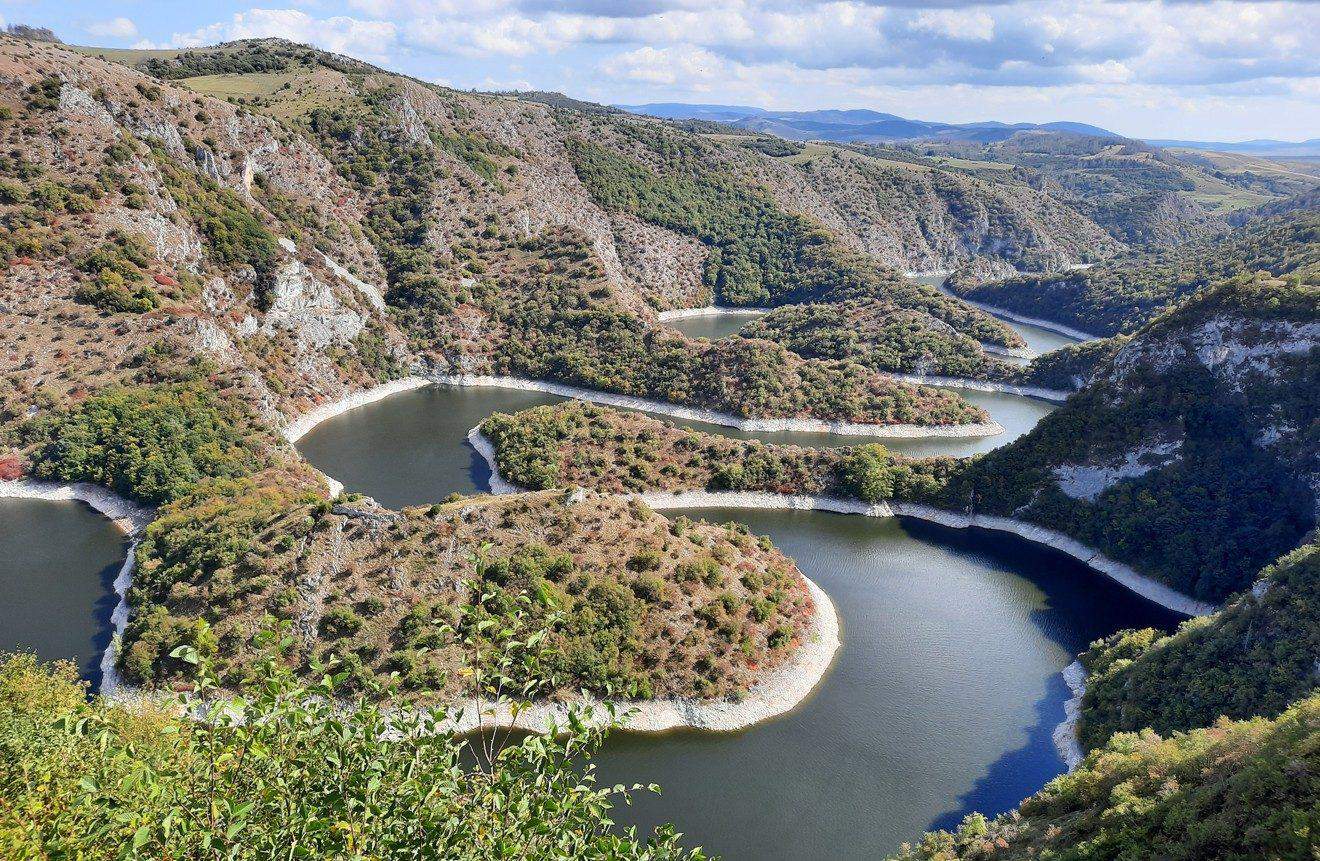
photography by: Omri Westmark
Despite being the most popular lookout throughout the reserve, Ledeni Vidikovac is rarely visited by large groups of sightseers due to its lack of accessibility, making it a rather peaceful place to focus on the breathtaking panoramic views distraction-less. Surprisingly, there is a small kiosk (named “Markove Kolibe”) located right next to the lookout itself, offering a limited variety of soft drinks and alcoholic beverages.
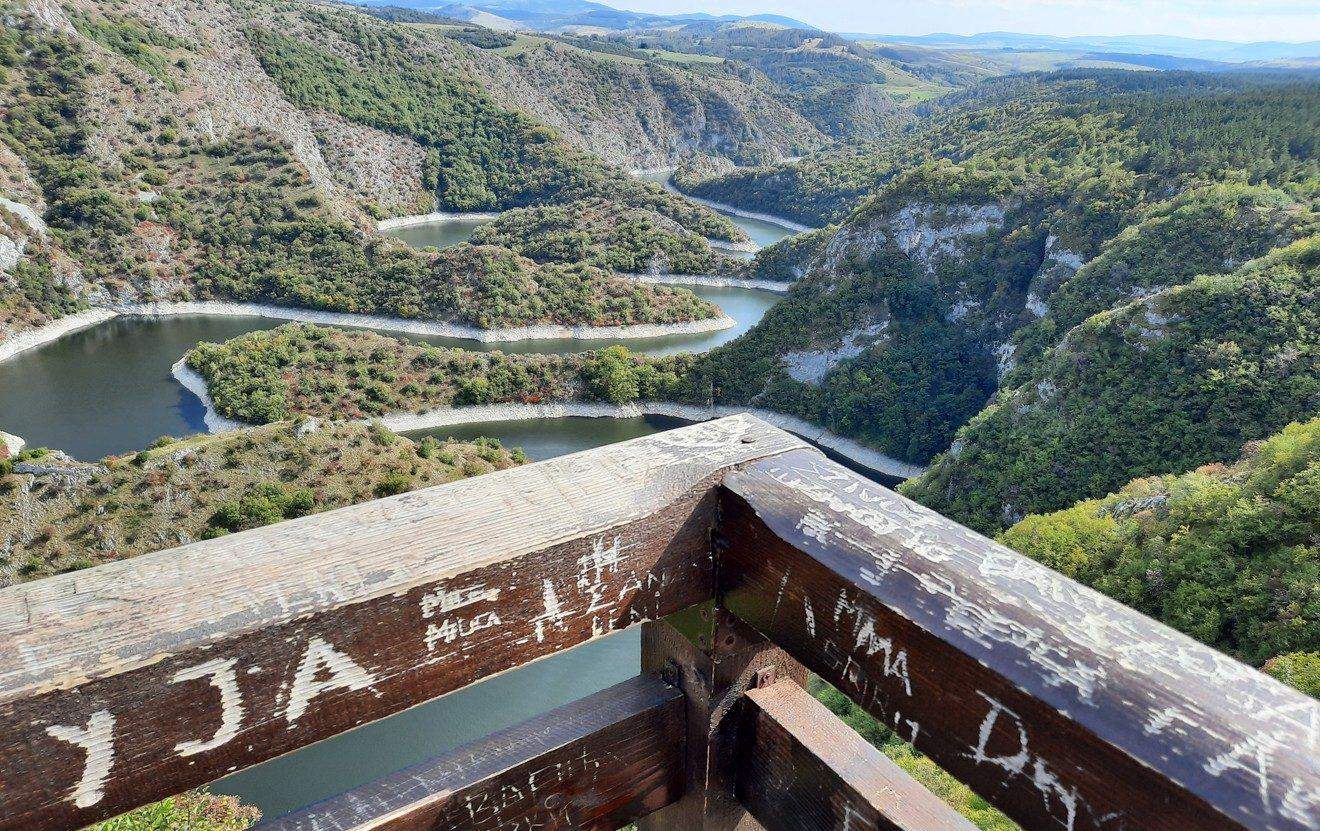
photography by: Omri Westmark
If you wish to further explore the area, looking for different angles to gaze at the meanders, take the southward narrow trail through the forest.
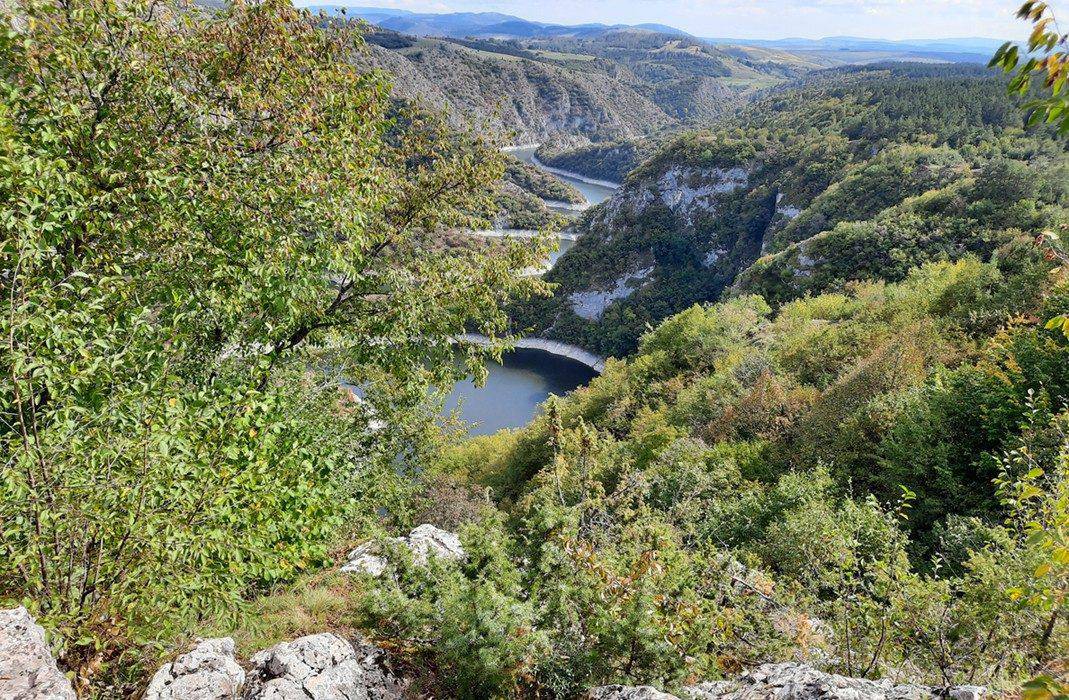
photography by: Omri Westmark
Besides providing truly magnificent views of Uvac River, the trail is also an excellent opportunity to hike and experience the reserve’s immense bio-diversity.
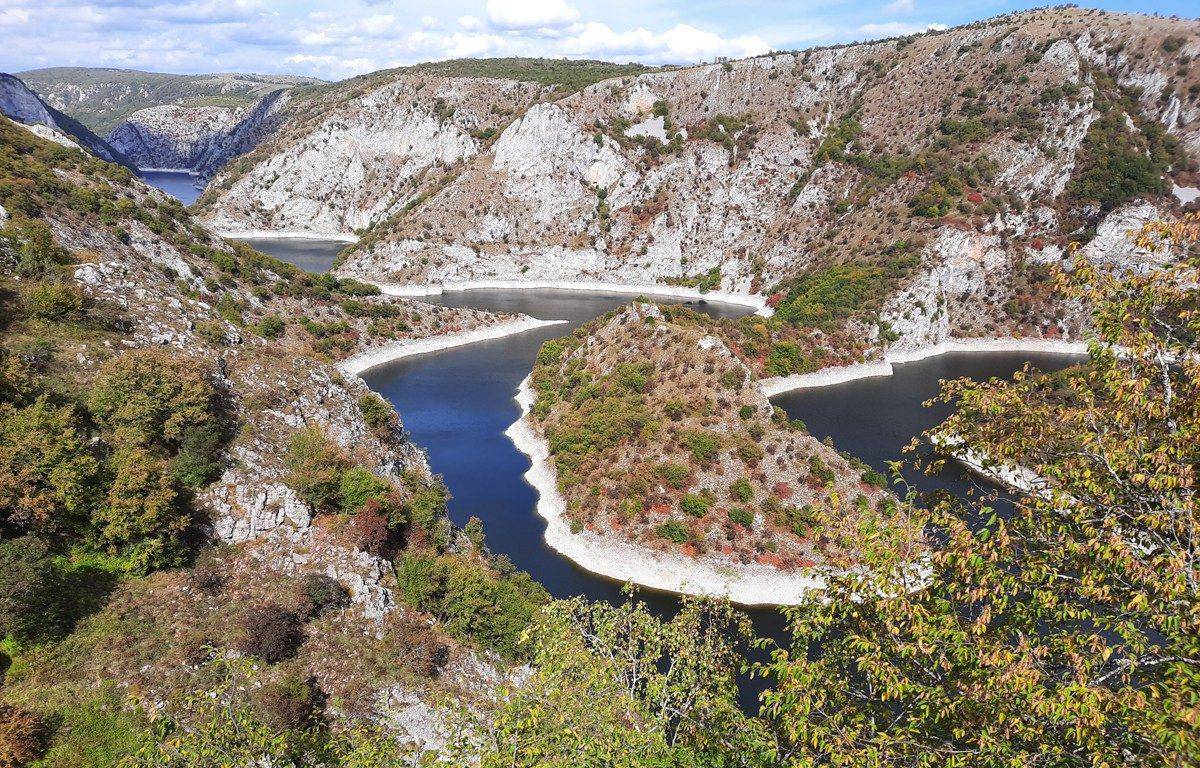
photography by: Omri Westmark
By far the most popular national park in Serbia, Tara National Park provides a glimpse to the region’s primeval nature, serving as a refuge for the ample fauna and flora existed long before the arrival of humans. Named after the Tara Mountain, the park has 30 hiking trails in total, crossing meadows, craggy terrain and pristine dense forest. Besides it obvious natural beauty, the park also has a couple of historic buildings, most notably Račа Monastery, making Tara an interesting and worth-visiting place for practically everyone.
Most hikers access the park through Mitrovac, a tiny village centered around the park’s visitors center, where maps and info books are available. For nature lovers wishing to fully experience Tara, Mitrovac has few accommodation and dining options intended specifically for that purpose.
If you happen to be in Serbia during summertime, you’ll be glad to know that Tara is a relatively a cool place, as its elevation and woodland mitigate the warm temperatures.
The Drina River, which defines the park’s western border, is also interesting to explore by its own right, so make sure to allocate enough time for both.
Besides being the starting point for the bulk of the park’s visitors, the village of Mitrovac also serves as an intersection of many hiking trails, one of which is 9 and 9A, both bound for Banjska Stena, Tara’s most scenic lookout.
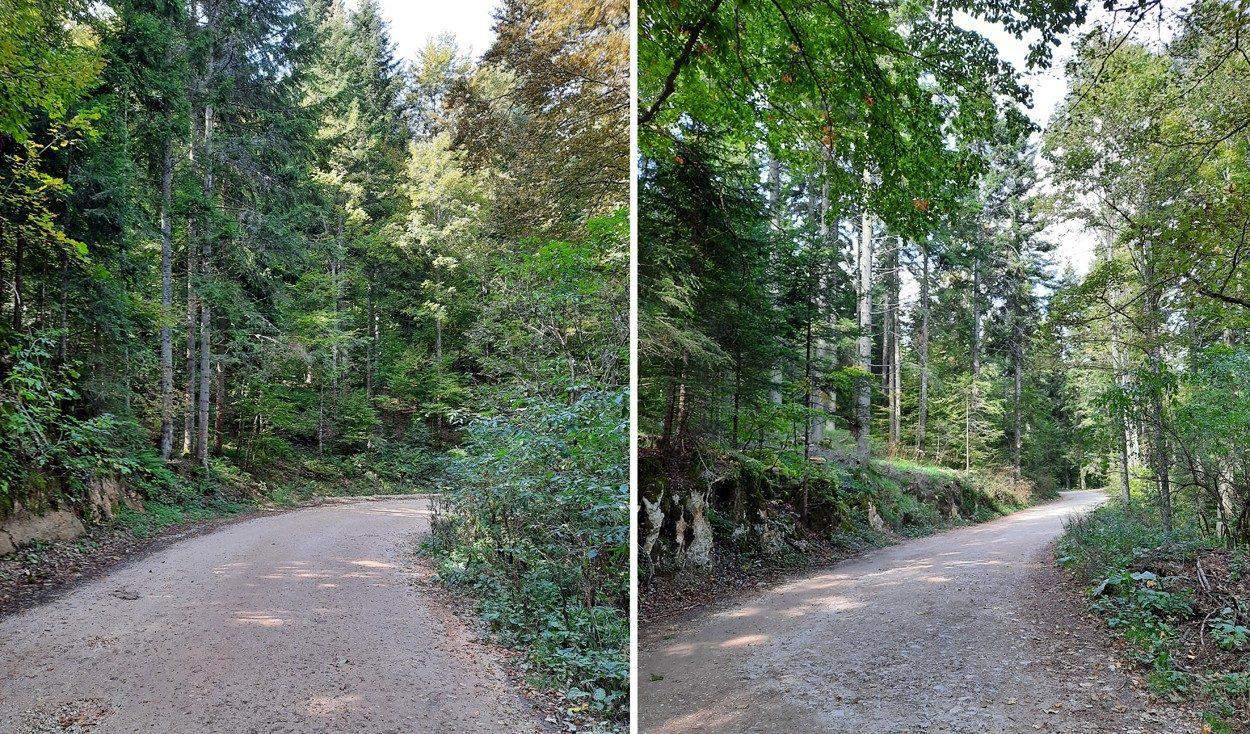
photography by: Omri Westmark
While 9A trail is a narrow dirt path traversing the woodland, trail no.9 which I took is a wide unpaved road, occasionally crossed by vehicles.
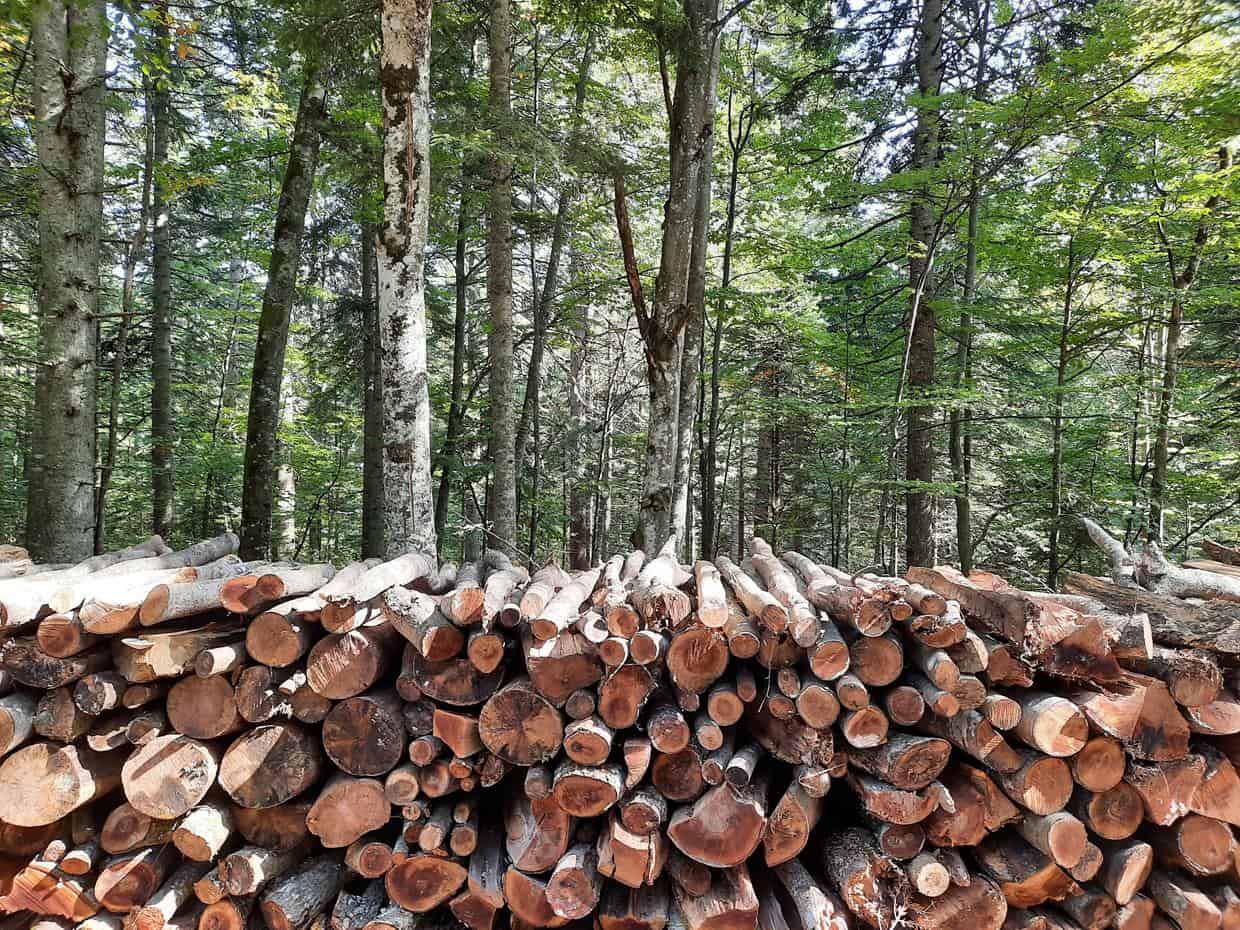
photography by: Omri Westmark
Tara National Park has several lookouts, but Banjska Stena is second to none, offering a breathtaking vista of the Drina River, also known as the international border between Serbia and Bosnia Herzegovina.
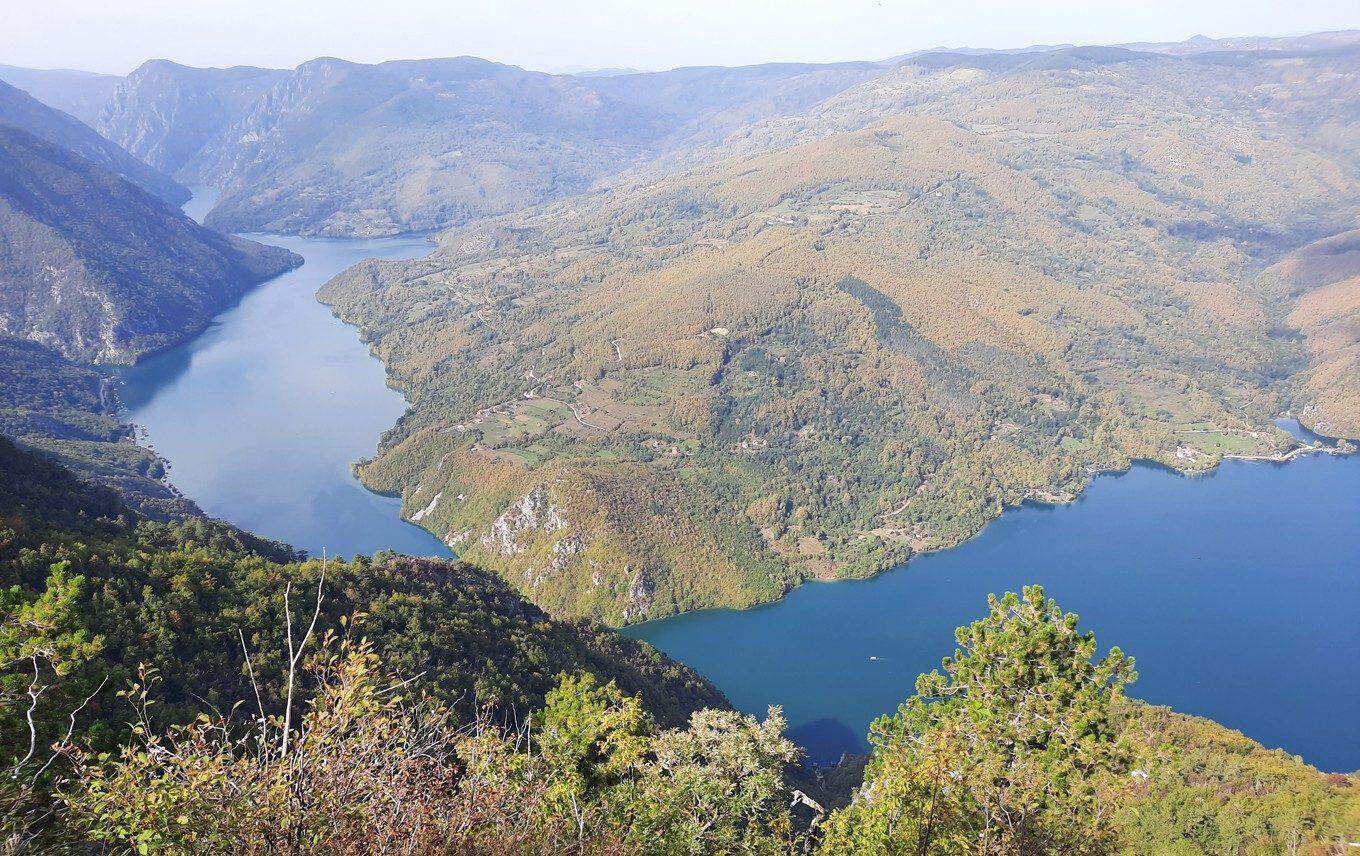
photography by: Omri Westmark
The main viewpoint has a regulated wooden platform, protected with railing, yet few meters ahead are several unmarked areas, providing different perspectives.

photography by: Omri Westmark
Prominently encompassing a large area downstream is the Bajina Basta Hydroelectric Power Plant and the artificially made Lake Perućac. Built in 1966, the 420 MVA hydroelectric power plant is the second largest in Serbia, accounting for roughly 8 percent of the country’s total electricity consumption.
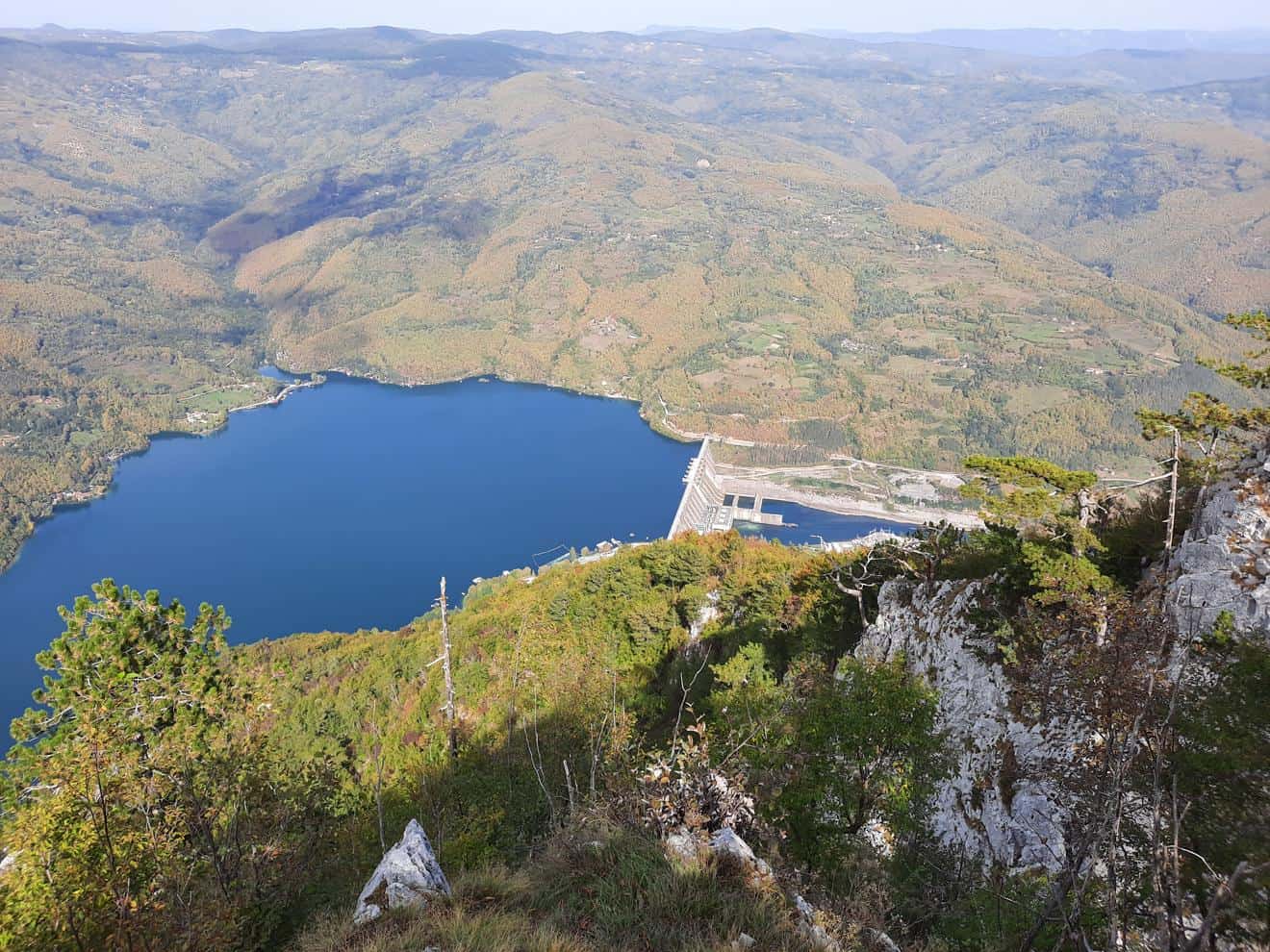
photography by: Omri Westmark
As said, the northern bank of the Drina River is part of Bosnia Herzegovina, also evident by the mosques and their minarets that are clearly visible all over the area.
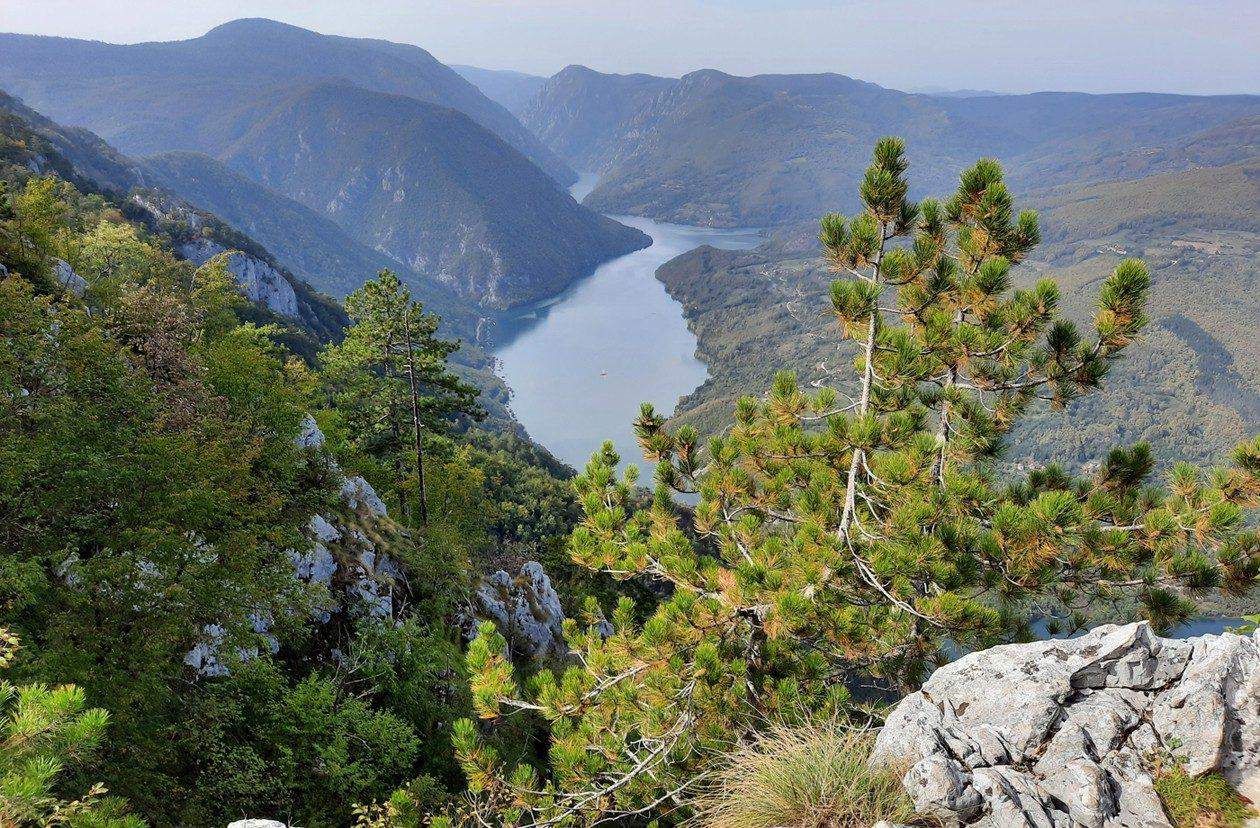
photography by: Omri Westmark
On my way back to Mitrovac I opted to hike via the 9A trail, crossing the thick forest.
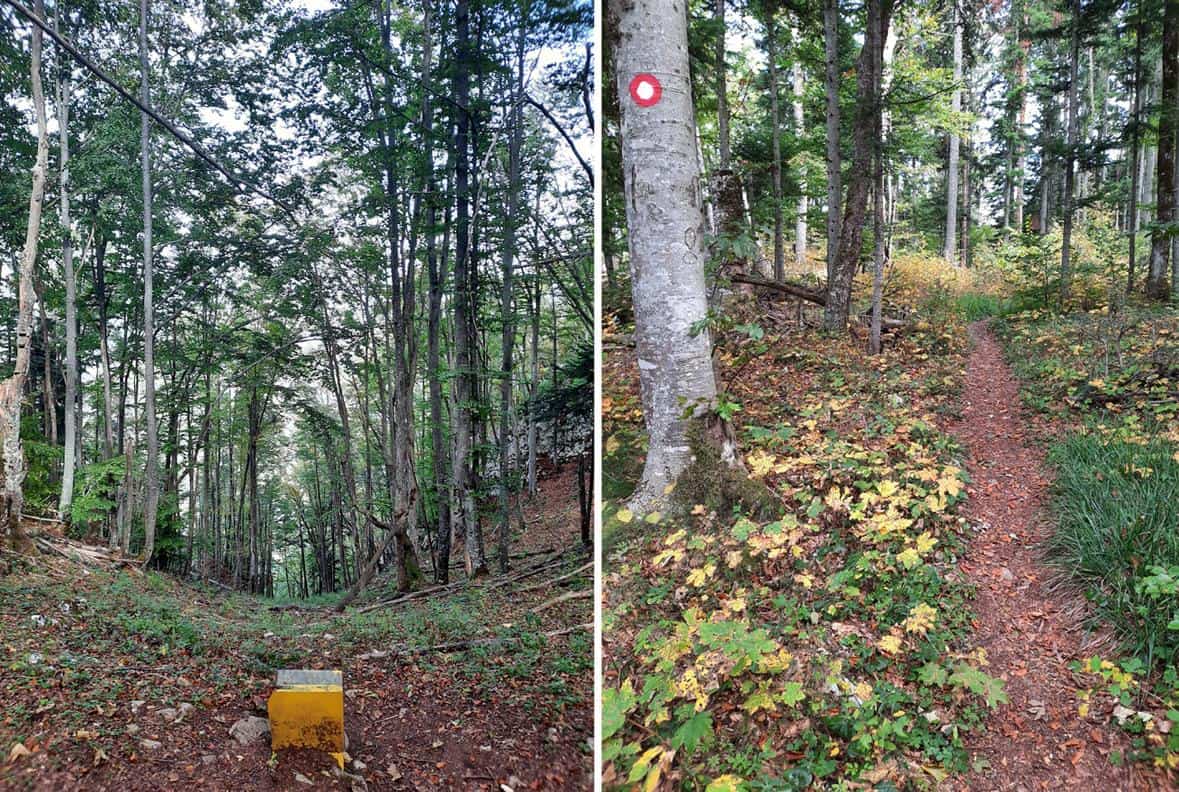
photography by: Omri Westmark
The forest trail is well-marked with signs, so make sure you follow the path.
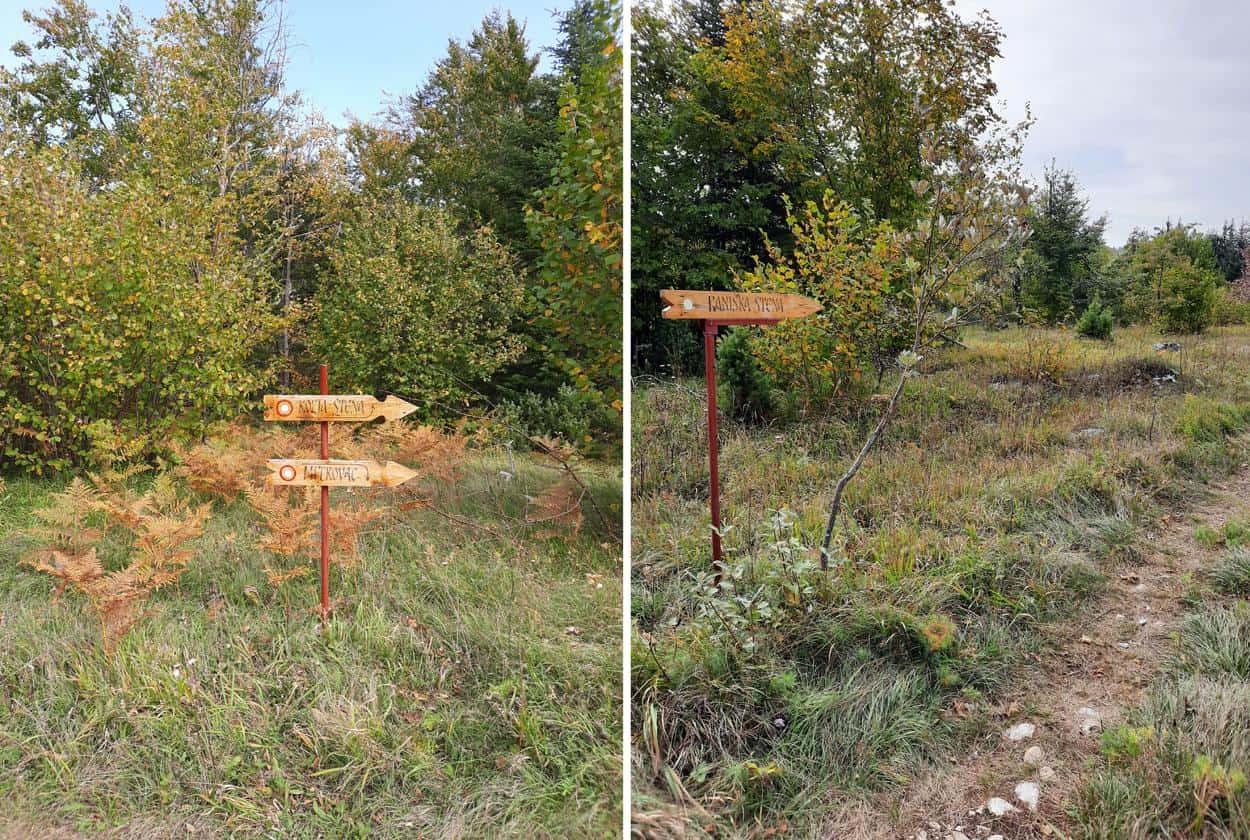
photography by: Omri Westmark
The trail also intermittently crosses meadows and glades.
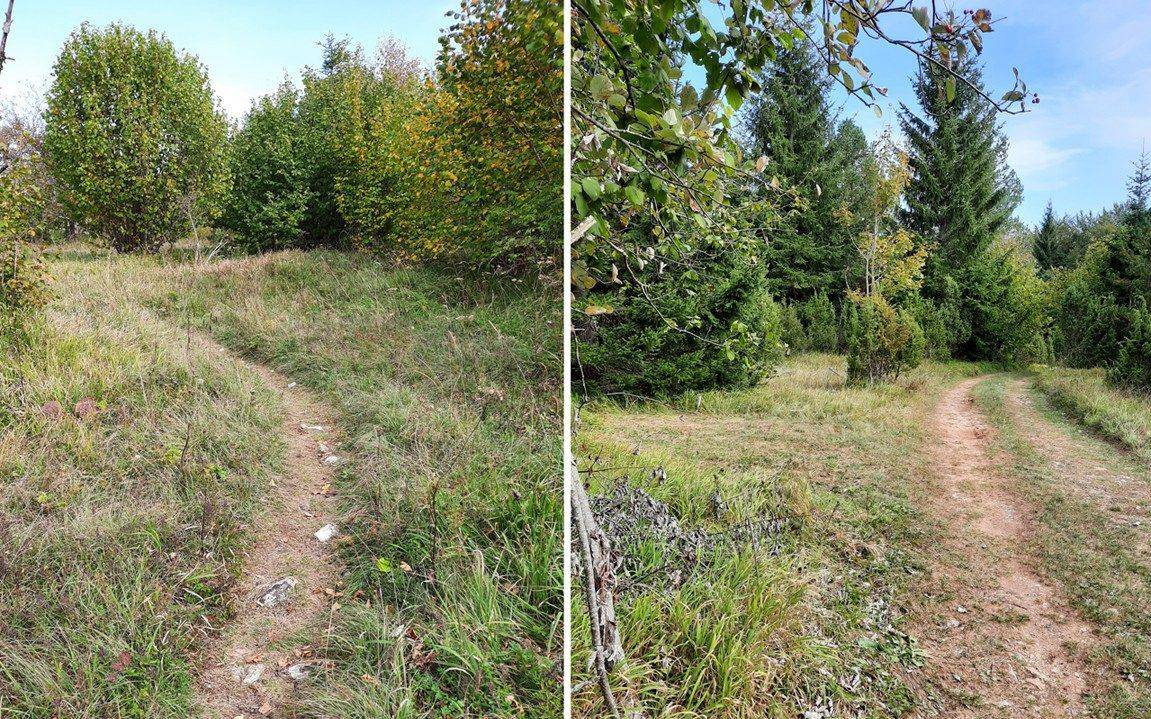
photography by: Omri Westmark
At a 50 min drive away from Mitrovac is the Drina River House, located right in the middle of the river, midway between Serbia and Bosnia-Herzegovina.
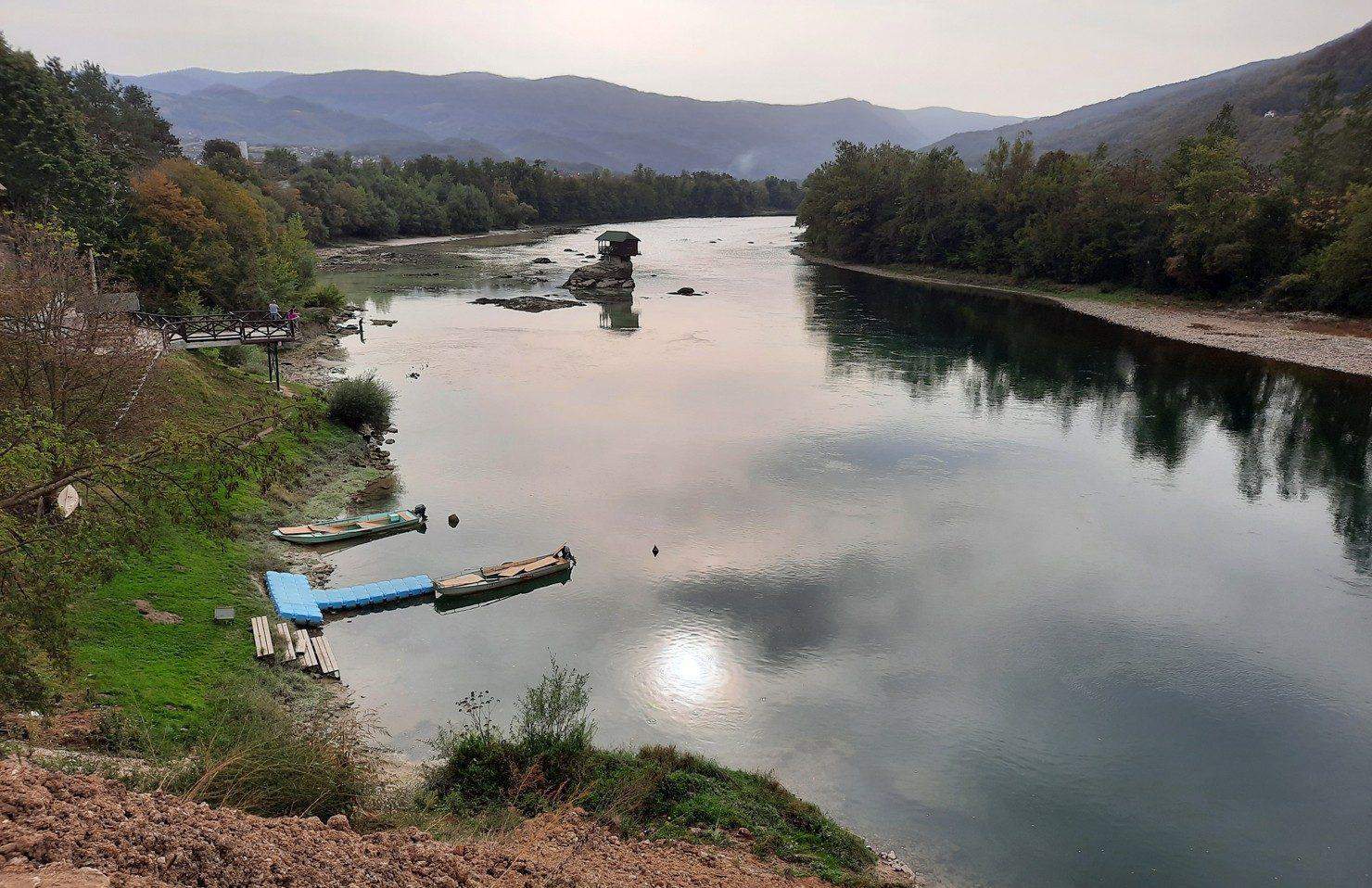
photography by: Omri Westmark
According to legend, the rock on which the house is built on, was brought to its current location by Kraljević Marko, a medieval prominent local figure, who supposedly threw a large chunk of rock from a nearby mountain, miraculously stopped at the middle of the river, granting his horse the ability to cross the river without stepping into deep water.
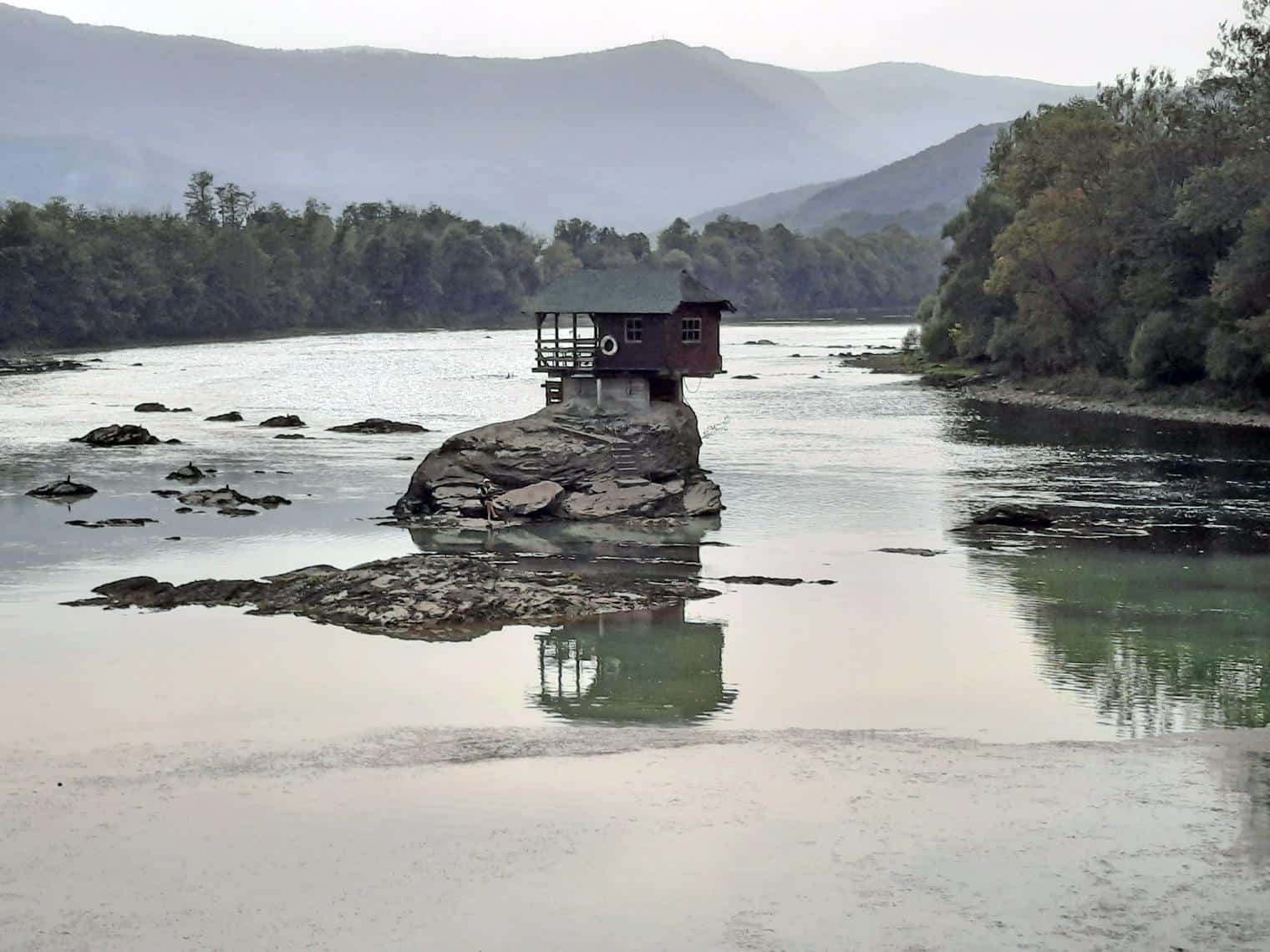
photography by: Omri Westmark
Originally, a small hut was built on the rock, utilized as a resting place for river swimmers.

photography by: Omri Westmark
Due to strong currents as a result of an extra raining season, the house was destroyed or washed away seven times, being rebuilt each time by the local community, while the current one perches on the rock since 2011.
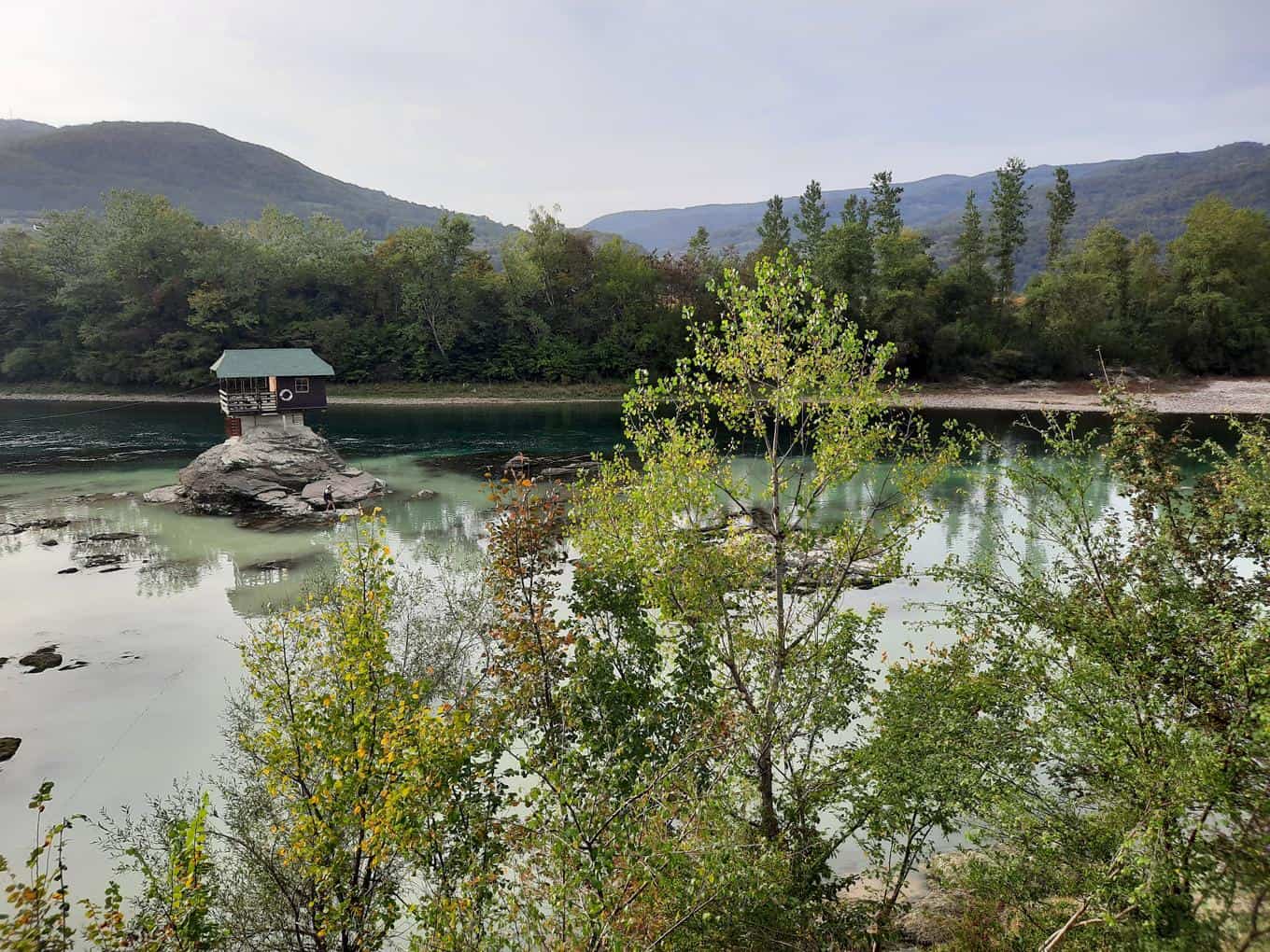
photography by: Omri Westmark
The current house draws dozens of domestic and foreign tourists each week, some of which swarming the nearby cafés, offering a view of the house while sipping a coffee. Additionally, the river itself is reachable by foot from the nearby network of staircases.
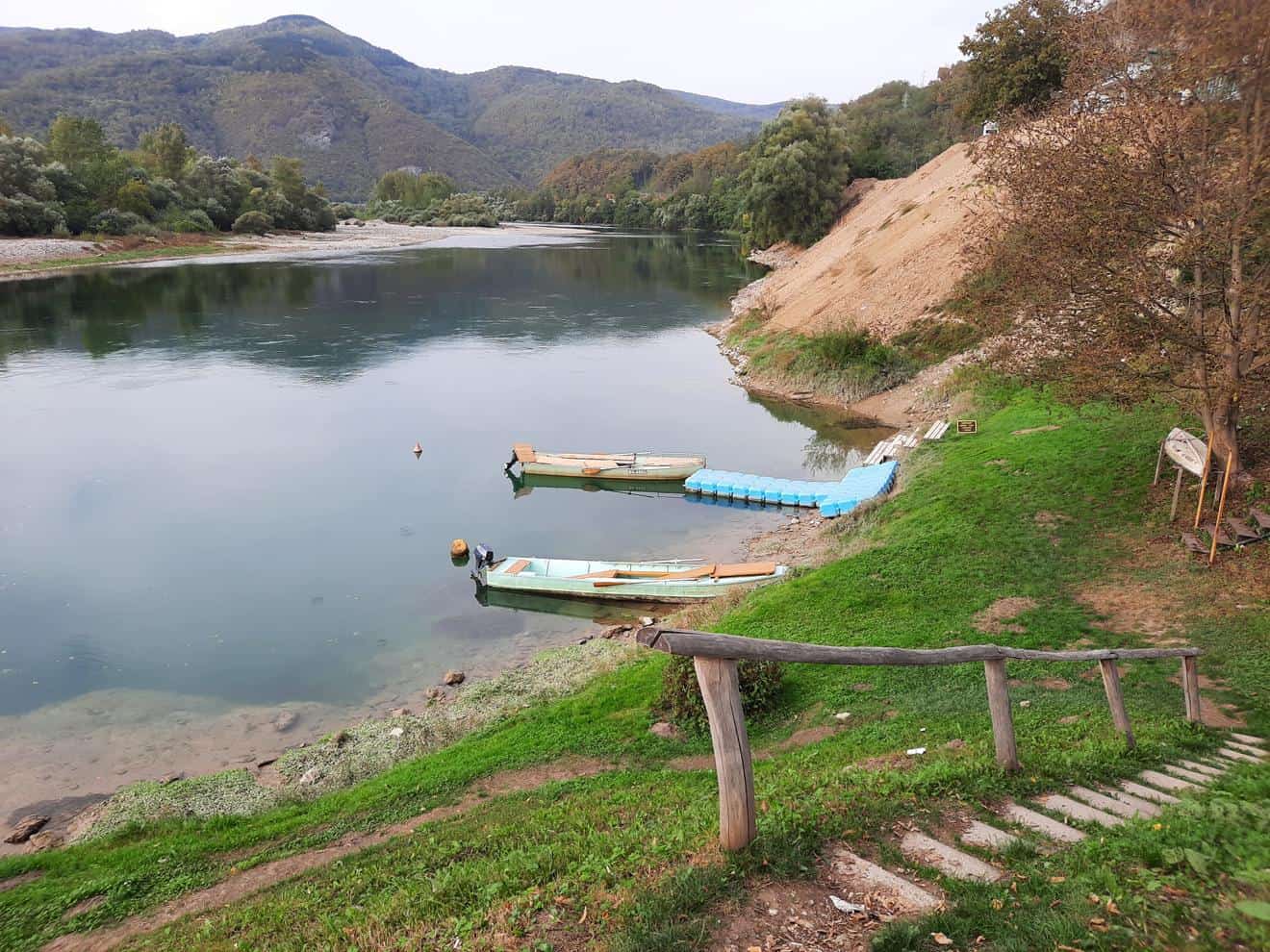
photography by: Omri Westmark
A recently built cantilever lookout provides a closer look and precious opportunity for a selfie on the backdrop of the river-house.
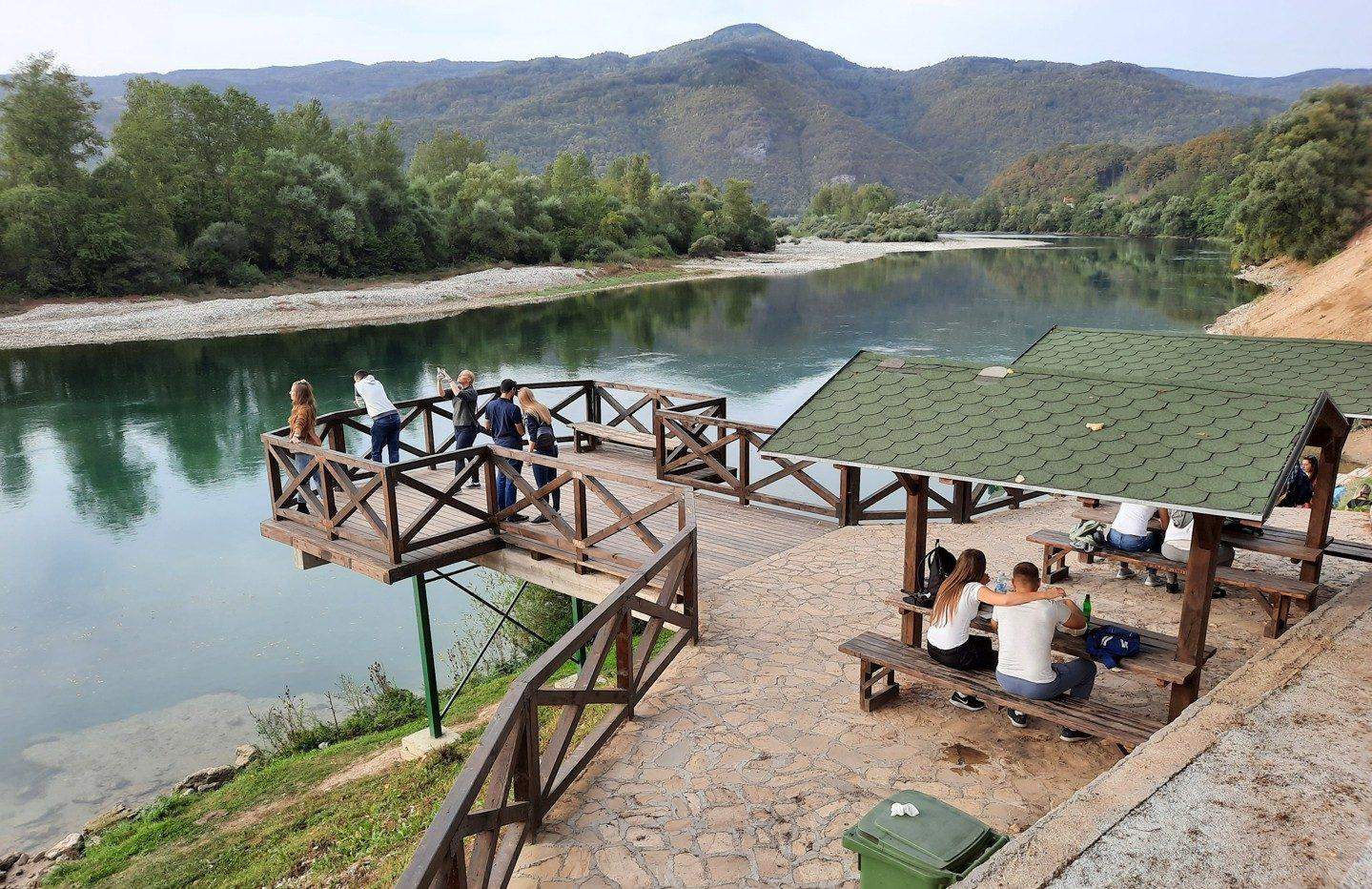
photography by: Omri Westmark
The largest national park in Serbia, Djerdap is nestled in the eastern part of the country, along the Danube River, forming a natural border between Serbia and Romania.
While the park is appealing in so many ways, its crown jewel is undoubtedly the Iron Gates Gorge, a 134 km segment of the Danube River, separating between the Carpathian Mountains on the Romanian side and the Balkan Mountains on the Serbian side, featuring giant karst cliffs, some of which rising 300 meters high.
Dwelled by 1,100 plant species, including 167 endangered ones, the park plays a major ecological role in protecting the country’s precious natural heritage. Apart from the extremely diverse flora, Djerdap is also populated by 270 bird species and 60 types of mammals, most notably the Eurasian lynx and 15 bat species.
However, if you thought that this park is all about its natural scenery, think again, as Djerdap was successively inhabited for thousands of years, most evidently in Lepenski Vir, an archaeological site bringing to light more than 10,000 years old settlements, built during the Mesolithic and Neolithic periods. Considered as a strategically important area, the iron gates gorge was the crossroad and battleground of many formidable empires, each leaving its own mark, whether it’s the remnants of the Trajan’s Bridge, constructed by the Romans across the Danube or the Iconic Golubac medieval fortress, perching on a crag by the river.
The small town of Donji Milanovac along the Danube River is where most of the park visitors start their journey. The park’s visitors center is located at the main street, Kralja Petra I, offering maps, books, souvenirs and even tickets for some of Djerdap’s main attractions.
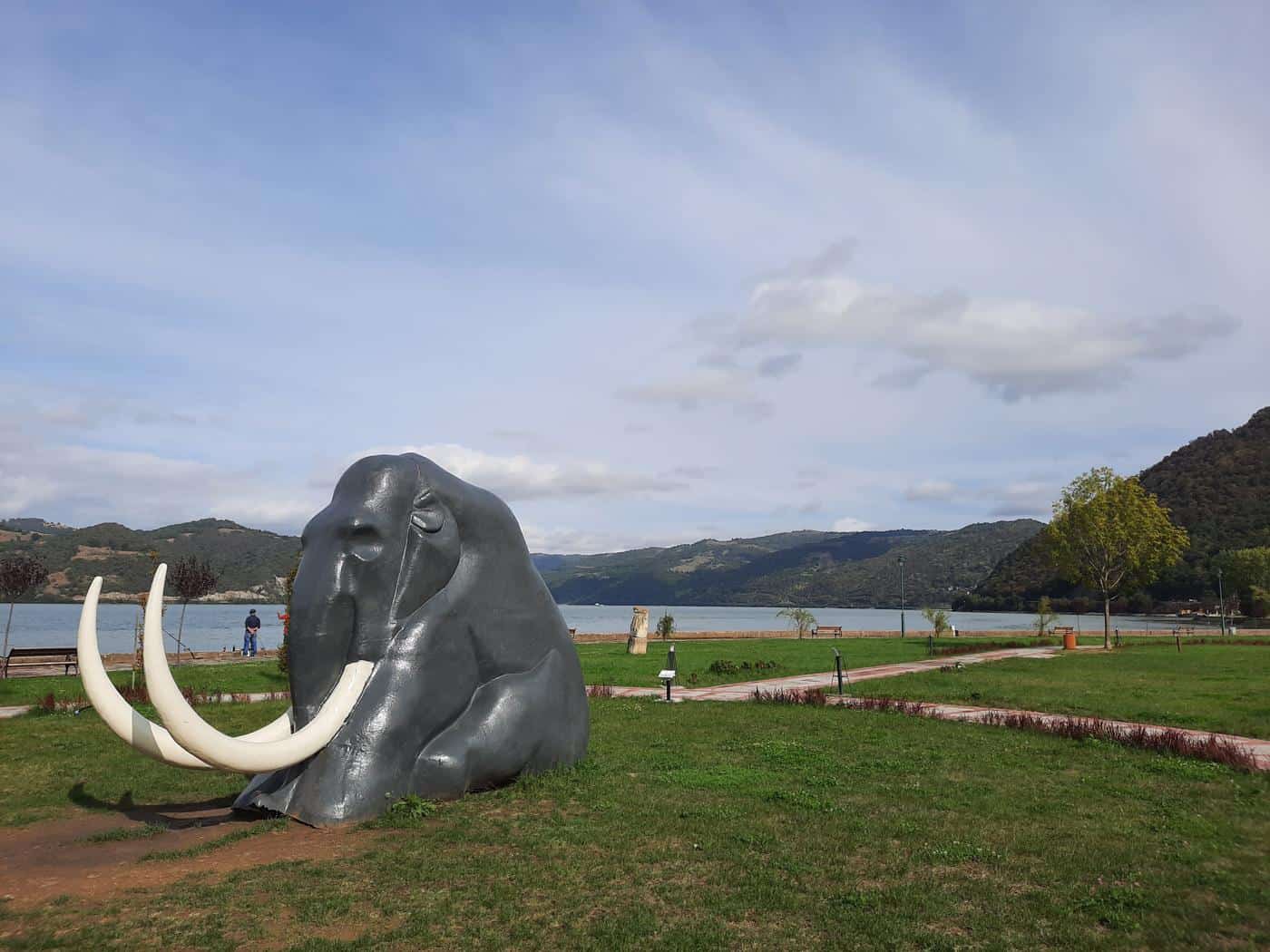
photography by: Omri Westmark
The town is not really a tourist destination by its own right, yet it’s a pleasant place to stroll along the river and purchase some local food items for a deep-forest picnic.
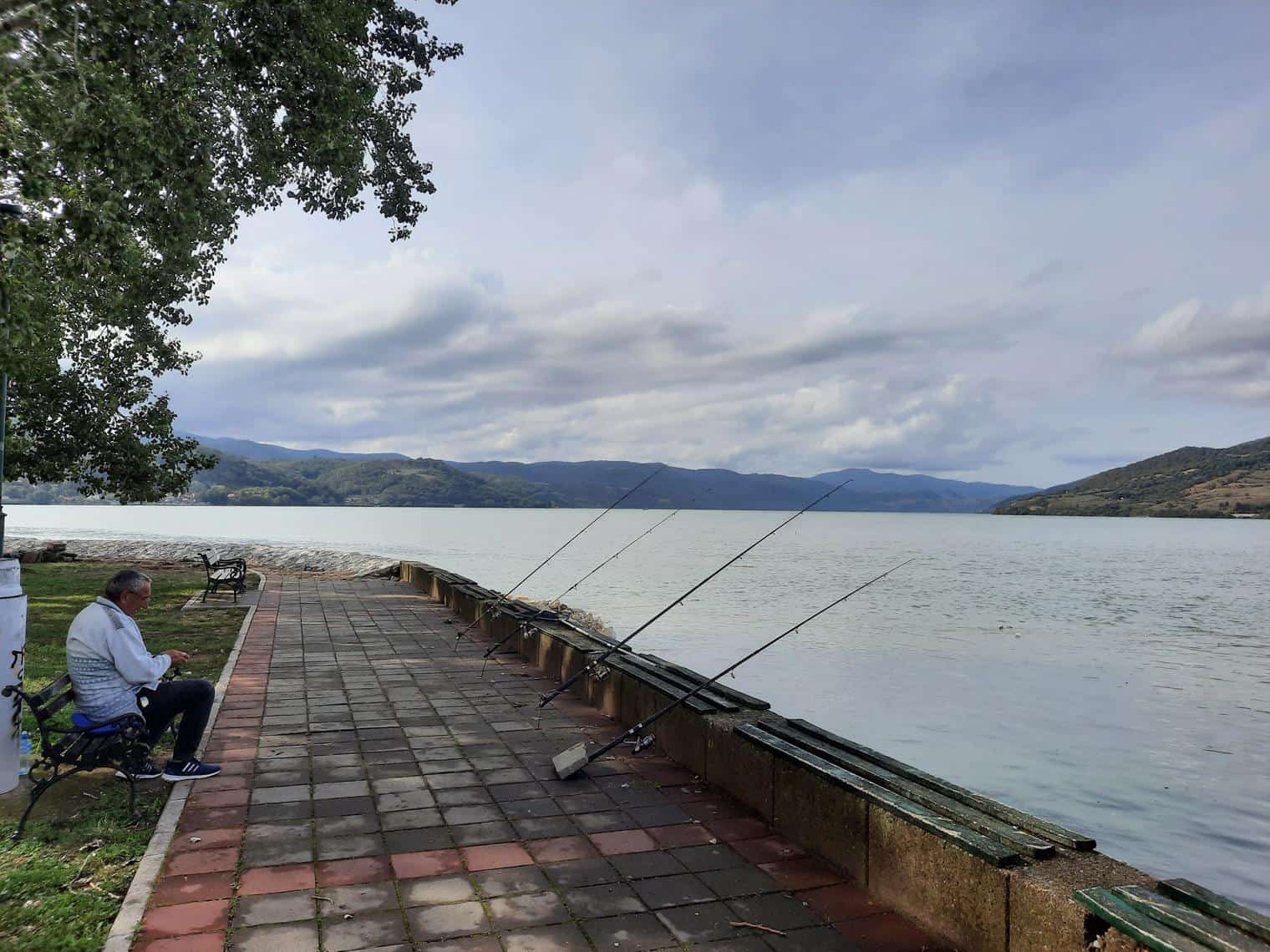
photography by: Omri Westmark
Outside the visitors center soars this slender war memorial, gracefully incorporated into the riverfront.

photography by: Omri Westmark
While driving along the Danube River, you constantly have a glimpse of another country in background, Romania.
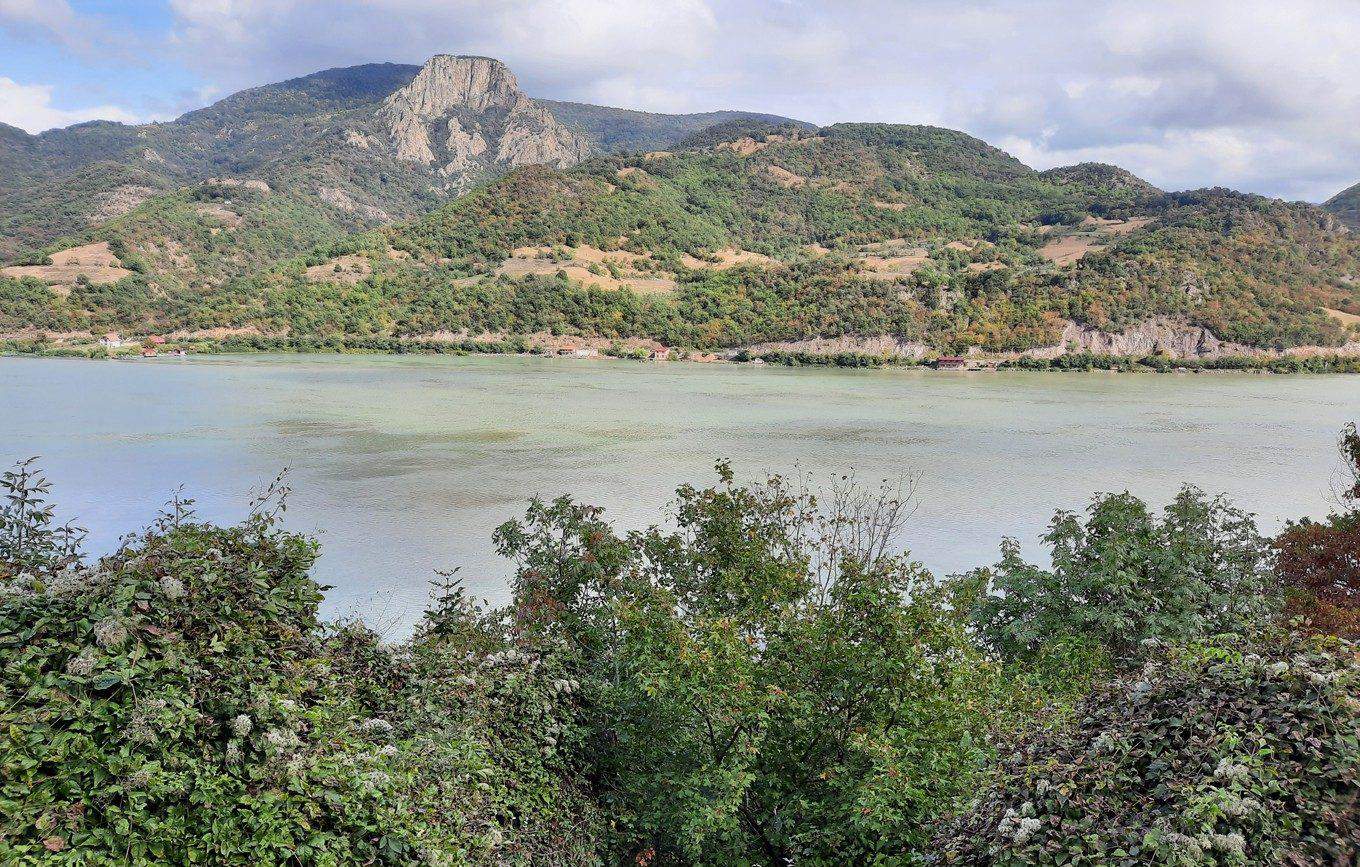
photography by: Omri Westmark
The uphill trail to Ploče viewpoint, blessed with the breathtaking vista of the narrowest point of the Danube River, entails intense physical fitness, yet it’s worth every bit of it. Take note that entering the trail requires an admission fee of 1.5 euros, purchasable at the visitors center or at the parking space near the main road where the dirt path begins.
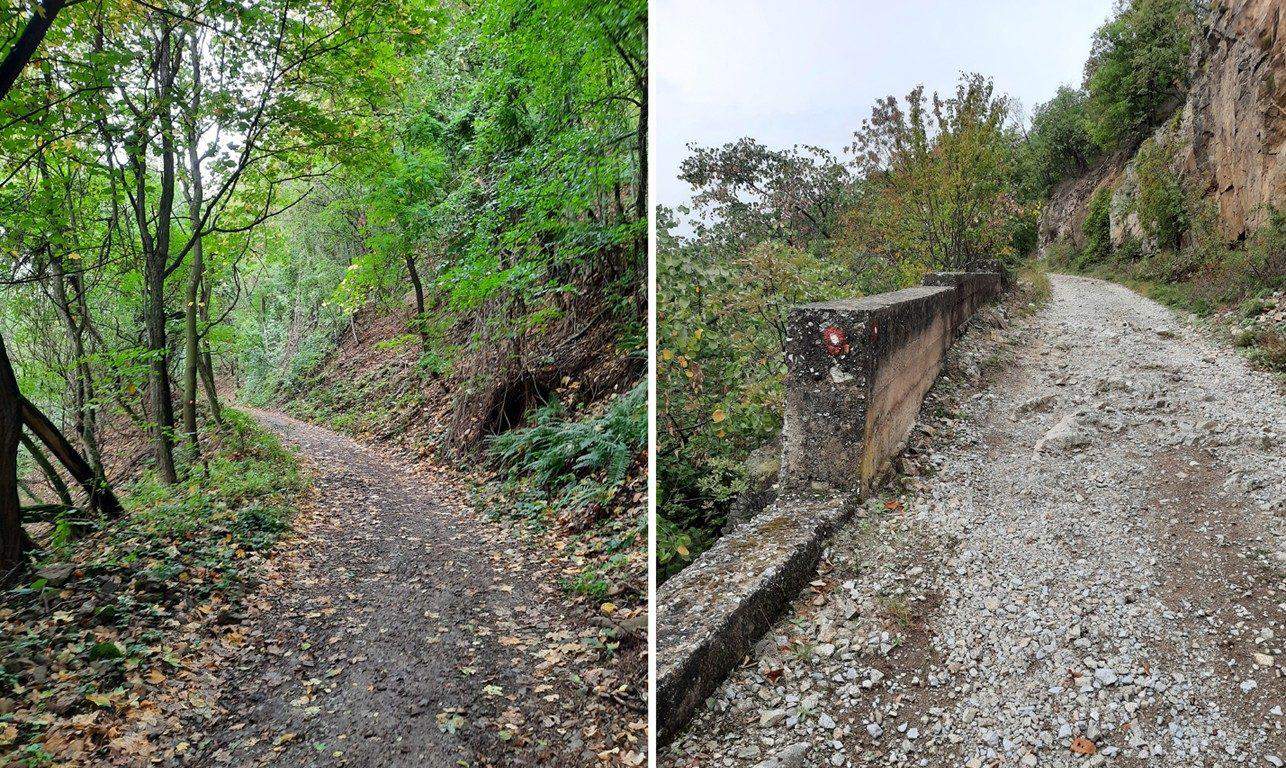
photography by: Omri Westmark
Despite an excruciatingly challenging climb, the iconic views of the Danube’s narrowest point definitely worth the effort. Part of the Kazan gorge (one of four gorges along the Iron gates), the river width at its narrowest point ranges anywhere between 150 to 180 meters, based on the level of water.
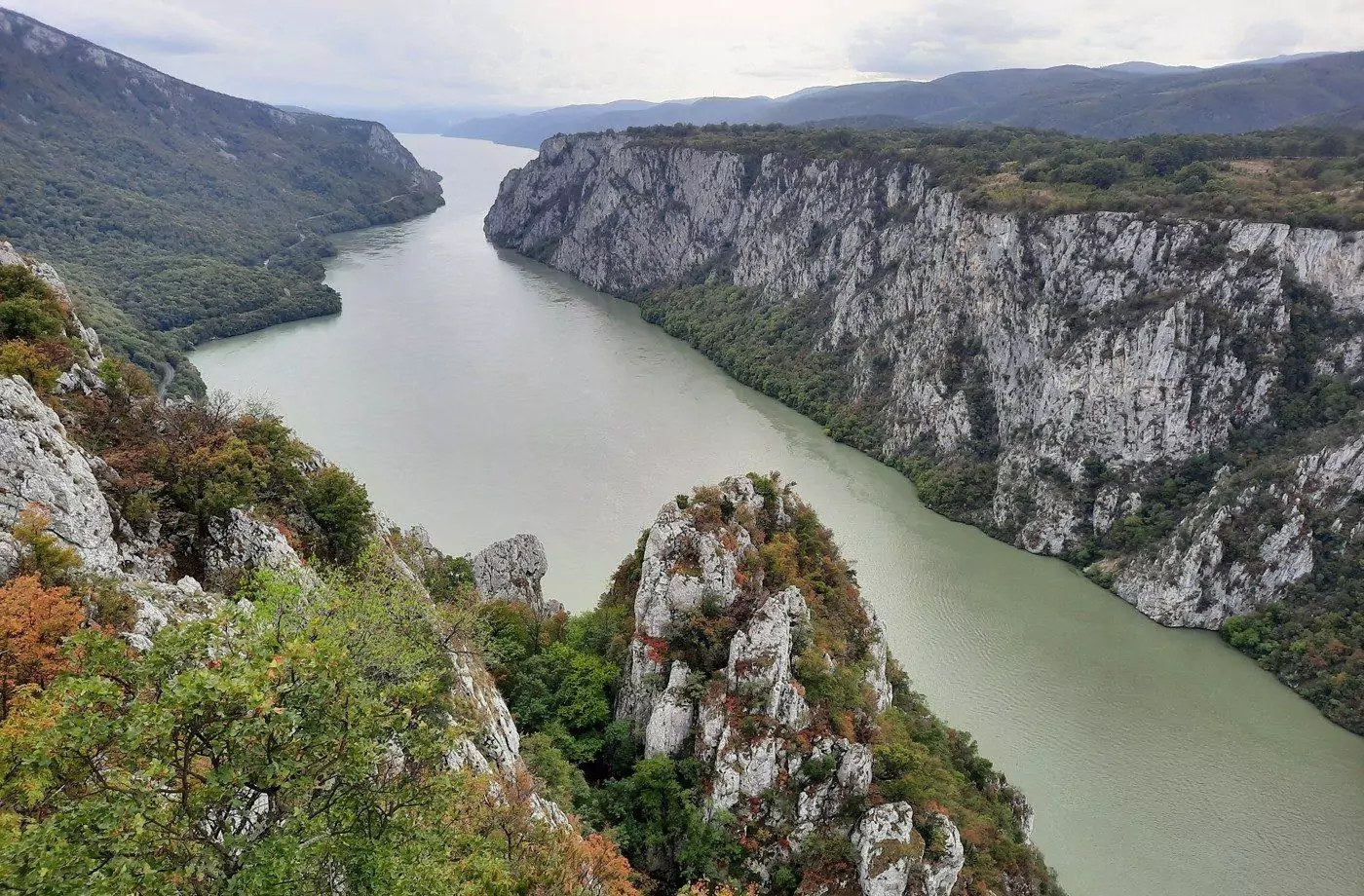
photography by: Omri Westmark
The craggy cape on the other side of the river belongs to the Romanian town of Dubova.
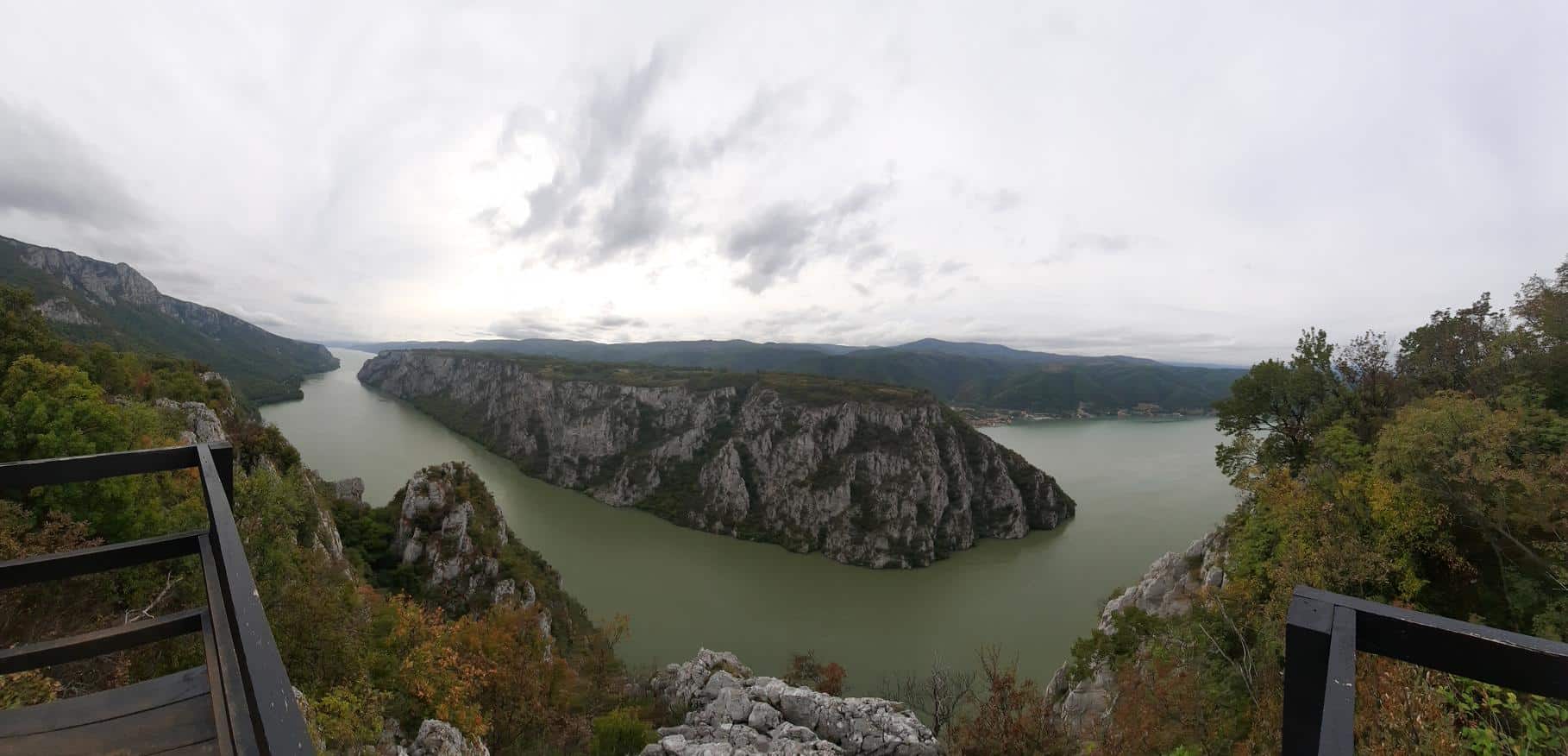
photography by: Omri Westmark
The main viewpoint stands on a karst plateau at a height of roughly 300 meters, giving a wide aerial view to behold at.
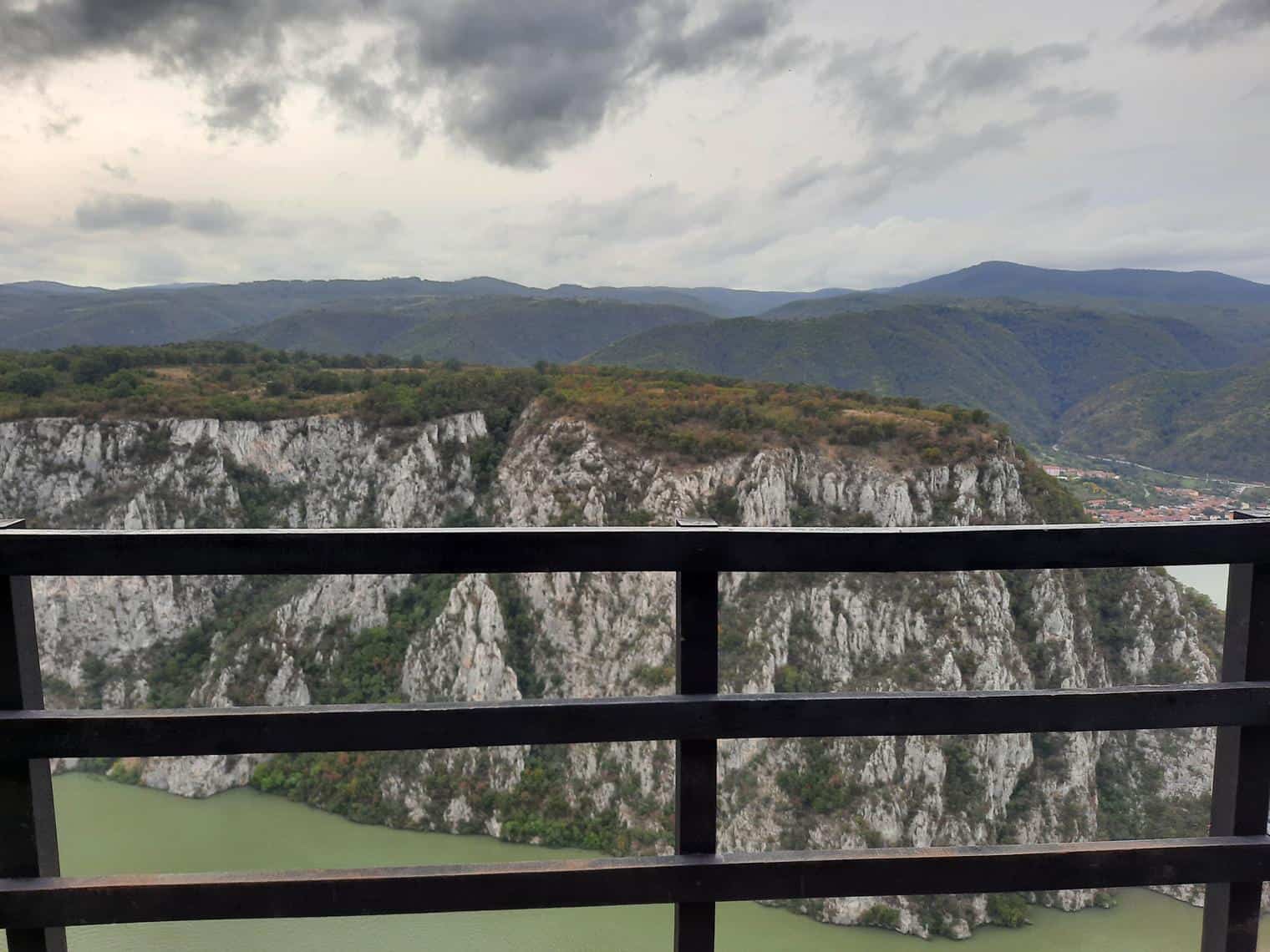
photography by: Omri Westmark
Looking northwards, the Romanian town of Dubova is clearly visible.
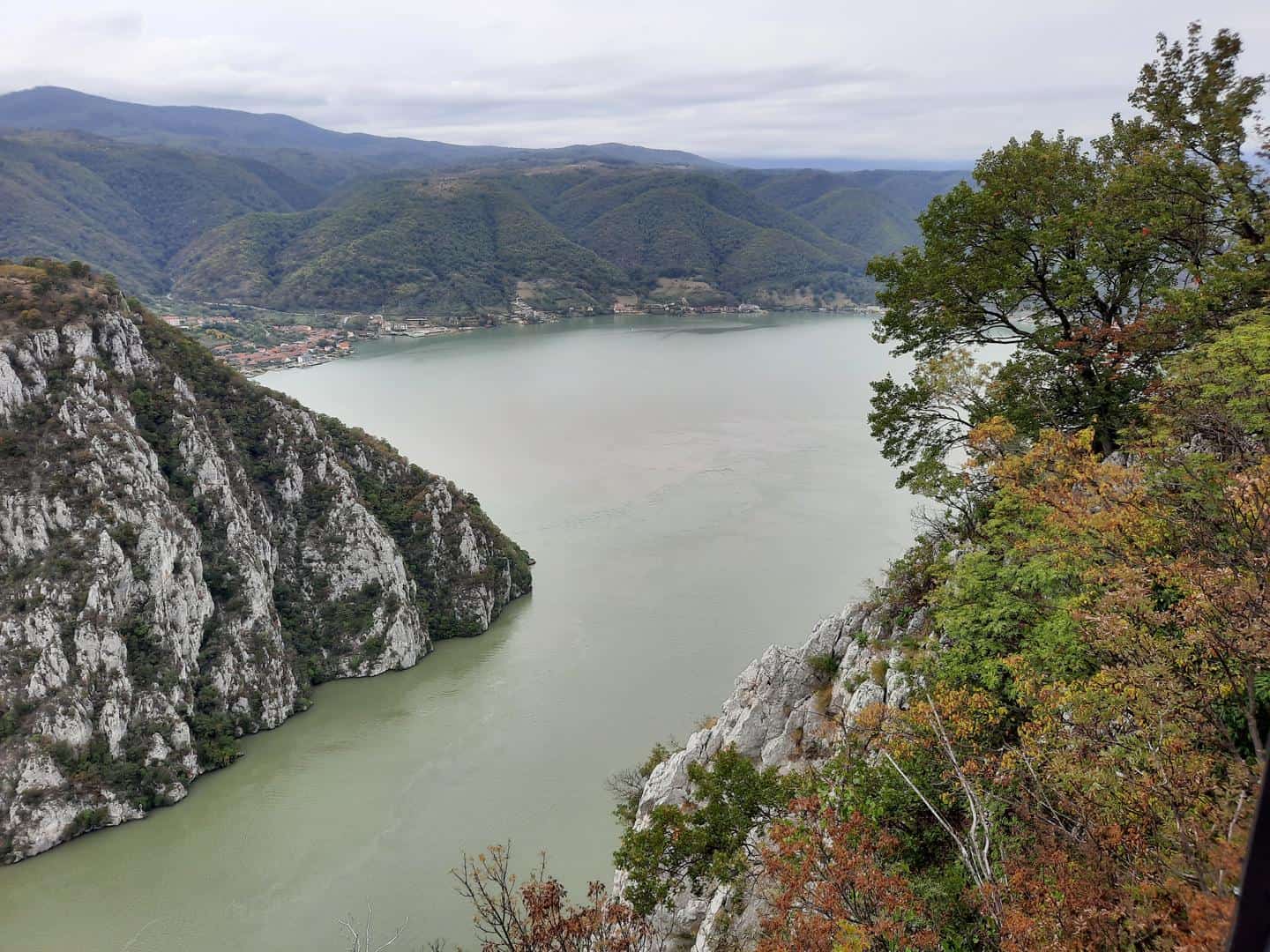
photography by: Omri Westmark
While the main viewpoints is satisfying enough for most travelers, for the more adventurists of you it’s possible to cover part of the way back through a small path through the woodland.
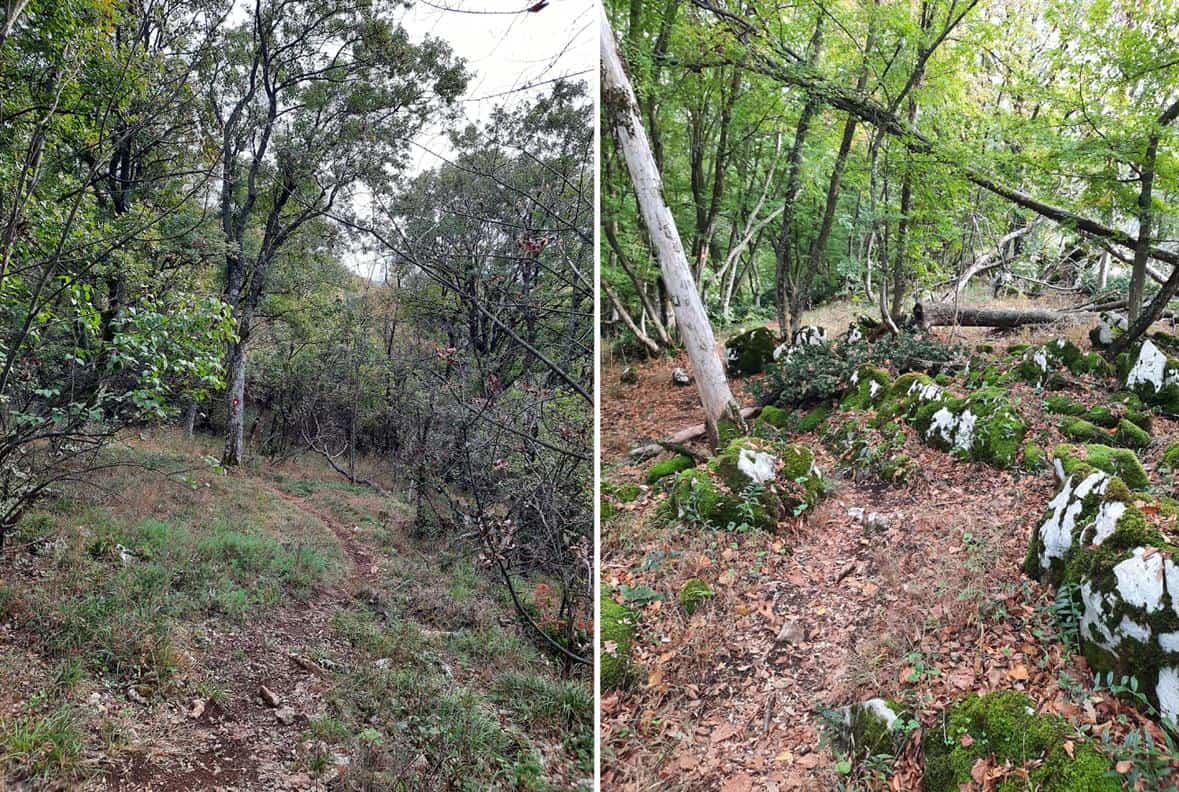
photography by: Omri Westmark
On top of the hiking experience, the trail also has a couple of unregulated lookouts with breathtaking views.
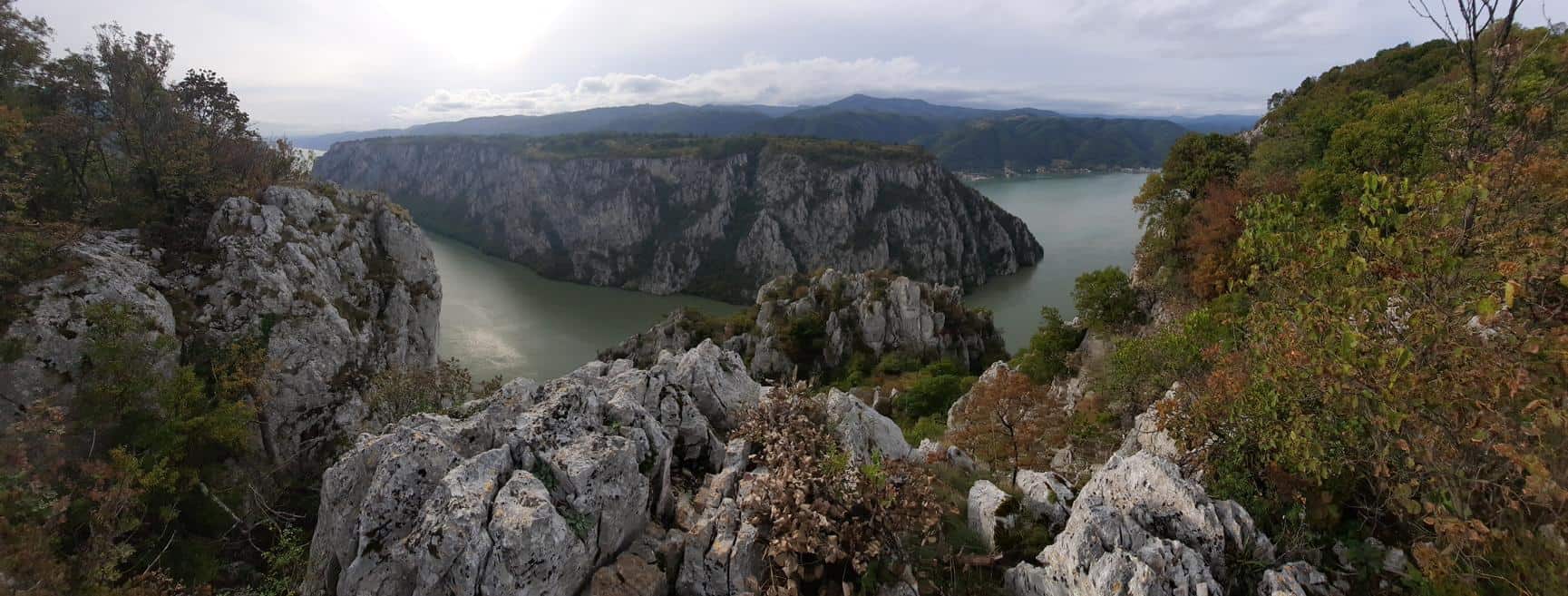
photography by: Omri Westmark
Suffice to say that due to lack of any safety measures like railing, being cautious and watchful is absolutely a must.
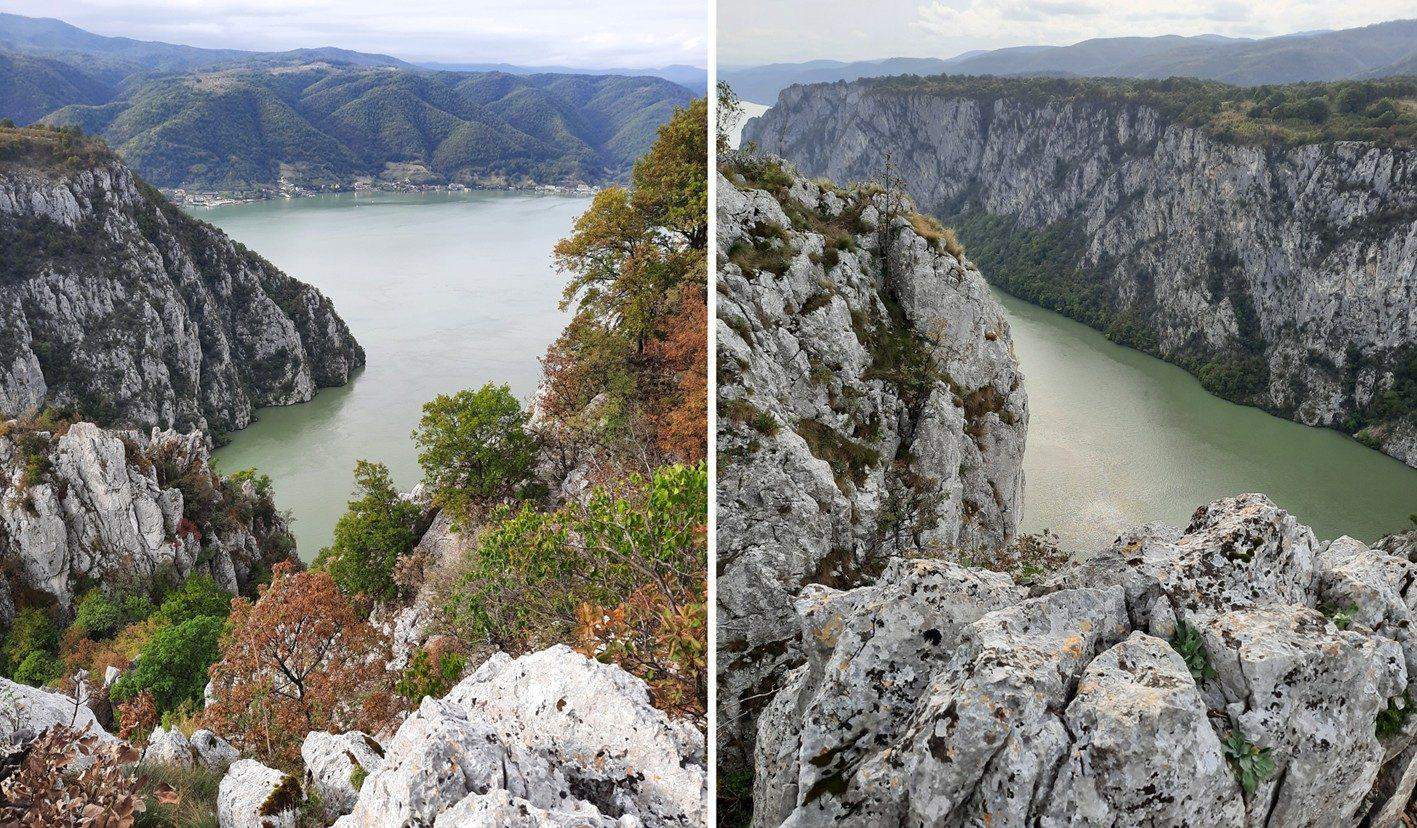
photography by: Omri Westmark
Whereas most of the trail’s lookouts are rather informal as mentioned, one viewpoint stands out, featuring an old wooden railing.
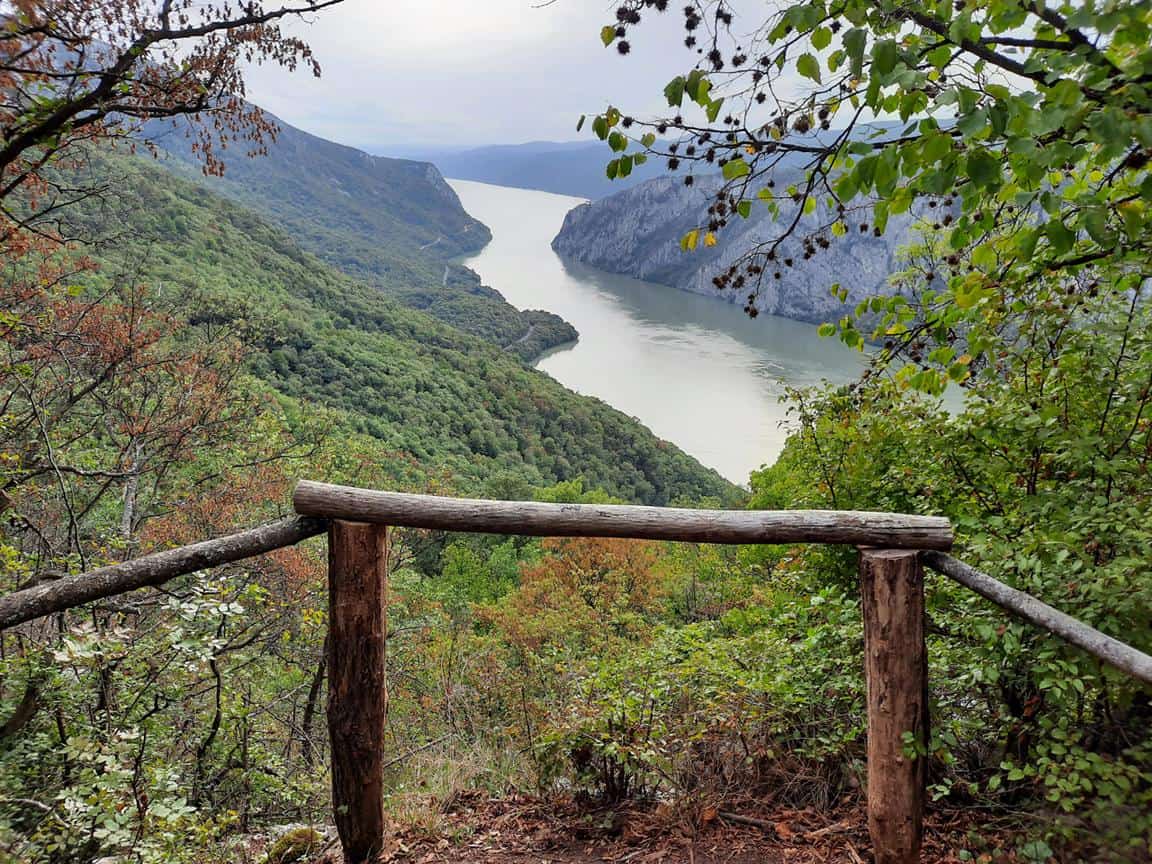
photography by: Omri Westmark
The trail is never really packed with swarms of tourists, yet this lookout is even more isolated and peaceful if you happen to look for the perfect place to meditate.
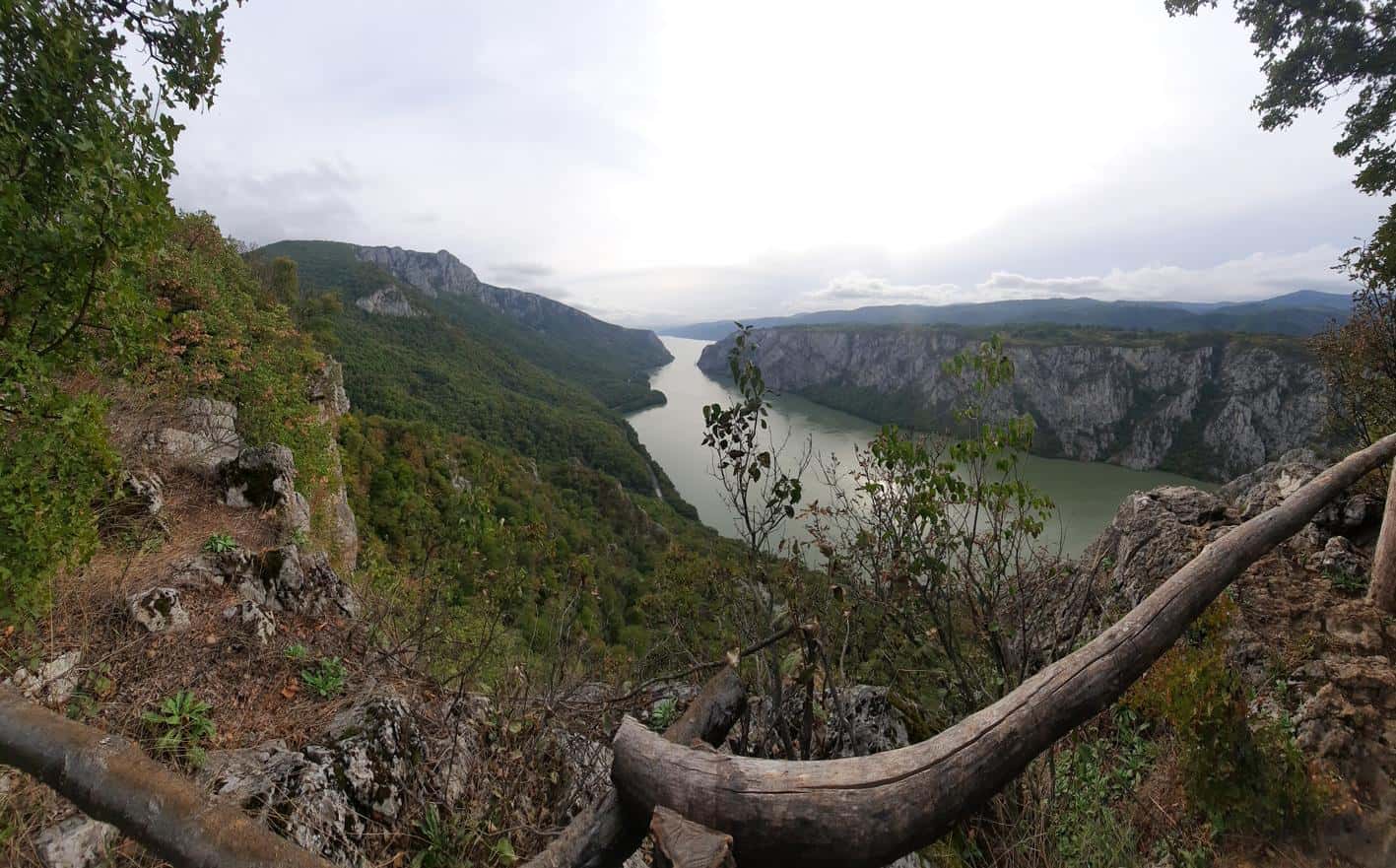
photography by: Omri Westmark
On the outskirts of Djerdap, slightly outside the park’s official premises, lies the town of Majdanpek, literally meaning a quarry or a mine, as for centuries it was known for its abundance of precious metals.
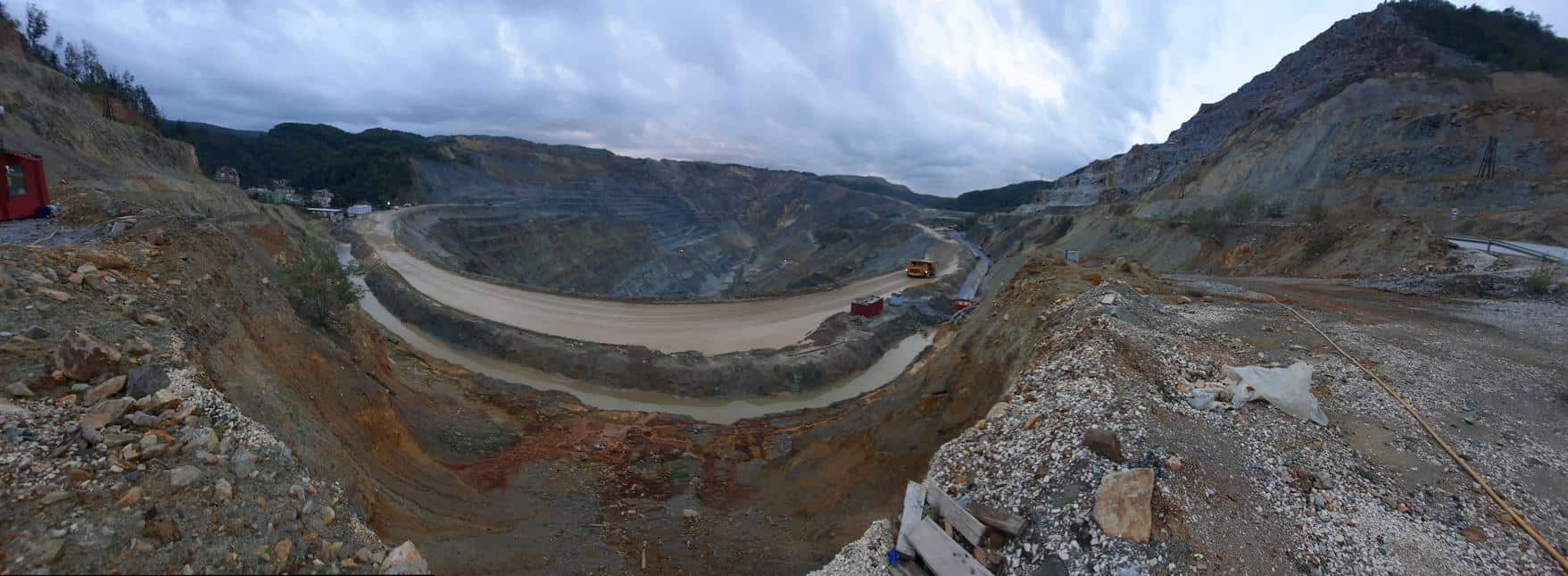
photography by: Omri Westmark
The modern-day mine is by far the town’s largest physical feature and source of income and employment. Largely owned by a Chinese firm, the mine has one of the largest reserves of copper anywhere in the world, as well as considerable amounts of gold and silver.
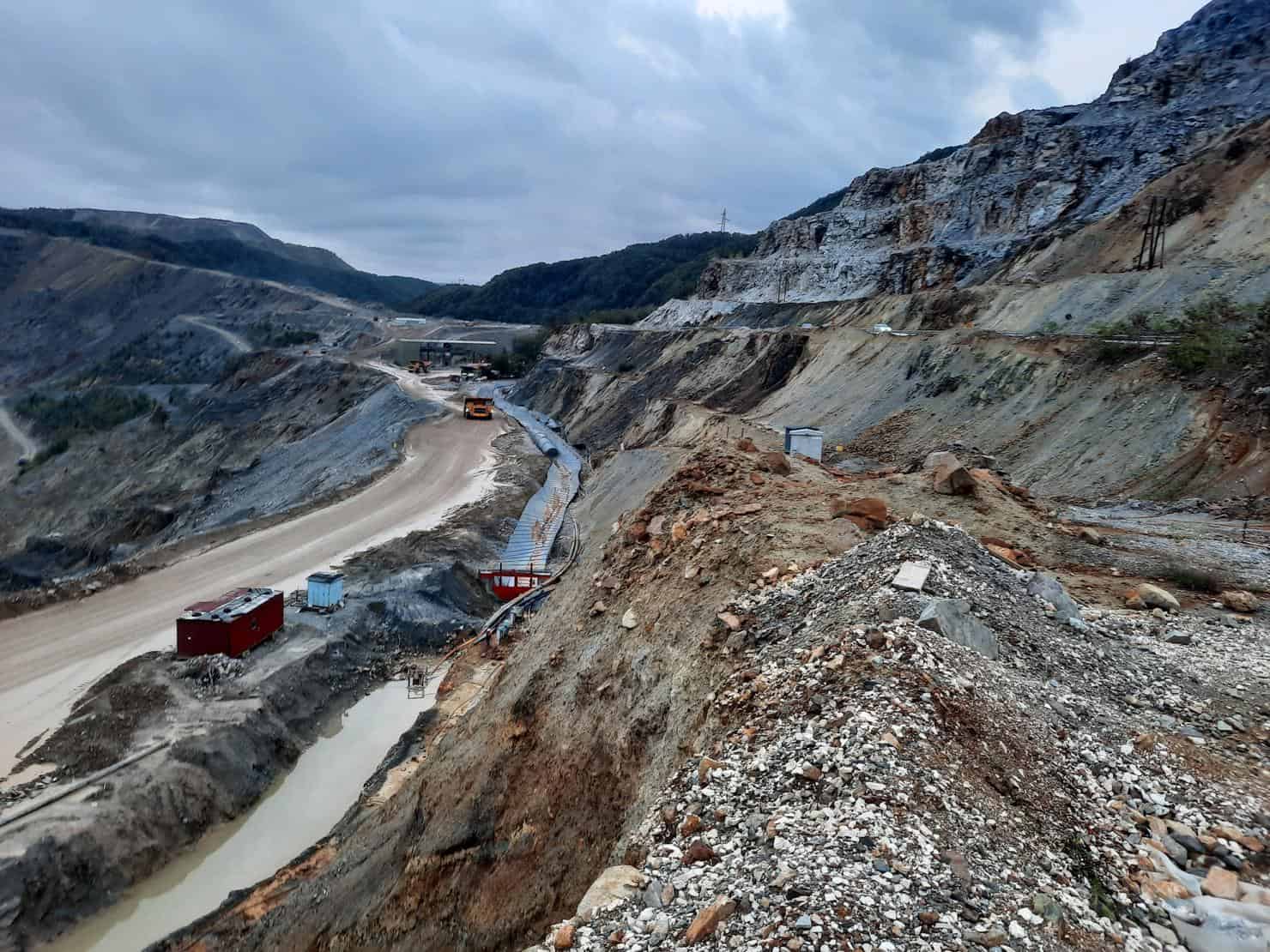
photography by: Omri Westmark
I guess that many people would regard this place as a dystopian eye-sore, and while it’s true to some extent, I would argue that visiting such a place is by no doubt an interesting experience to have.
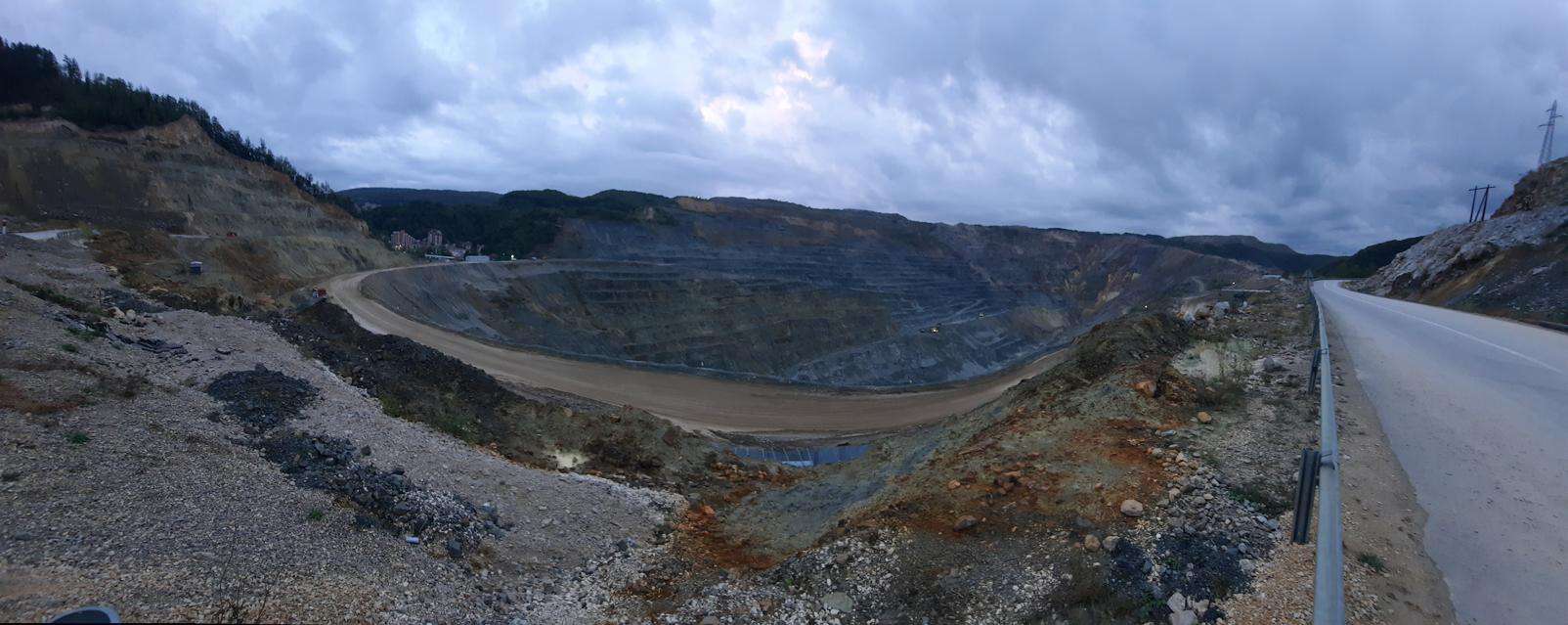
photography by: Omri Westmark